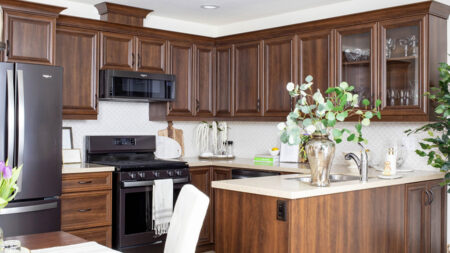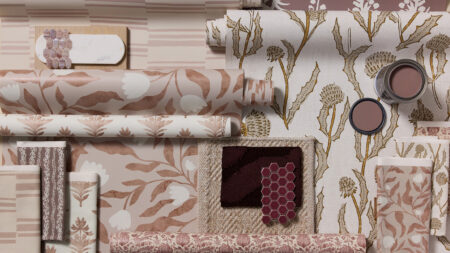Ever thought about how much window designs contribute to your home’s curb appeal? More than just functional, the right window design can elevate your home’s aesthetics while letting in natural light and fresh air.
With ever-evolving architectural trends, windows have transformed from ornate Victorian styles to sleek, modern minimalism. Yet, their purpose remains timeless: to brighten your space.
In this article, we’ll explore 11 stunning window designs and styles, breaking down what sets each one apart. Let’s dive in!
| Window Types Based on How They Open | 1) Casement Windows |
| 2) Awning Windows | |
| 3) Picture Windows | |
| 4) Single-Hung and Double-Hung Windows | |
| 5) Bay or Bow Windows | |
| 6) Slider Windows | |
| Window Types on the Basis of Placement | 7) Clerestory Windows |
| 8) Transom Windows | |
| 9) Dormer Windows | |
| 10) Corner Windows | |
| 11) Skylights |
Types of windows based on how they open
1. Casement Windows

Long and wide windows, such as casement windows, which operate by turning a crank, have gained extreme popularity over the last few years. They are easy to clean, provide excellent natural ventilation, and are customizable, making them ideal for modern homes in hot climates. Such window designs usually open inward and can be angled to steer the natural breeze into the building.
Ease of operation, less maintenance, and energy efficiency are some other strong suits. In addition, casement windows can also be installed with double-pane fiberglass frames with low-E coating for UV protection, as well as regulating temperature.
Pros:
- Easy to operate
- Casement windows open outward completely, offering better ventilation and view
- These fixed-pane windows are energy-efficient and highly secure
- Casement windows are customizable and can be adapted to suit various styles
Cons:
- Casement windows and central air conditioning cannot work together
- These window designs can’t be too large in size and weight
- Can’t use storm windows or screens
- More mechanical problems
Casement Window Design Ideas
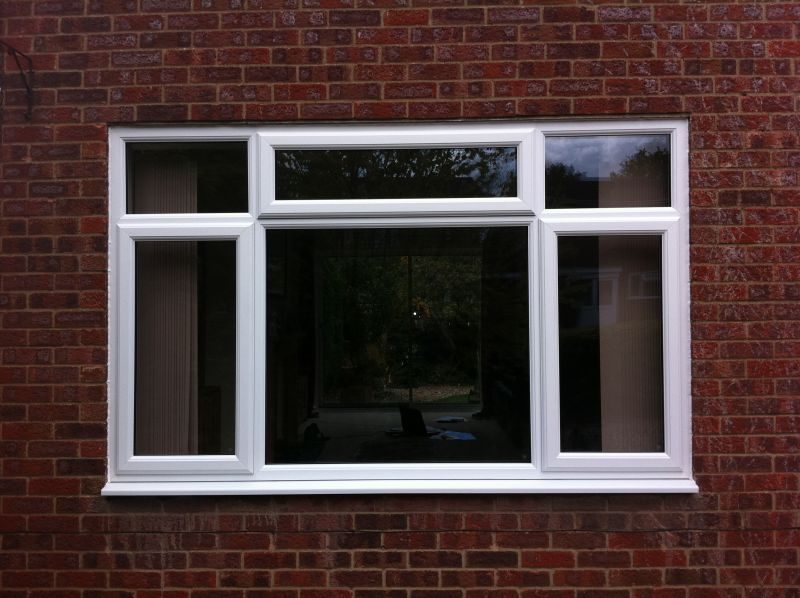
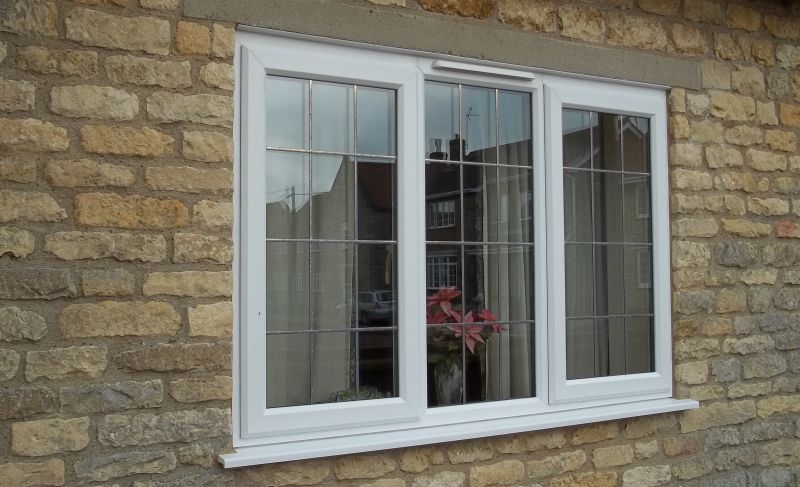
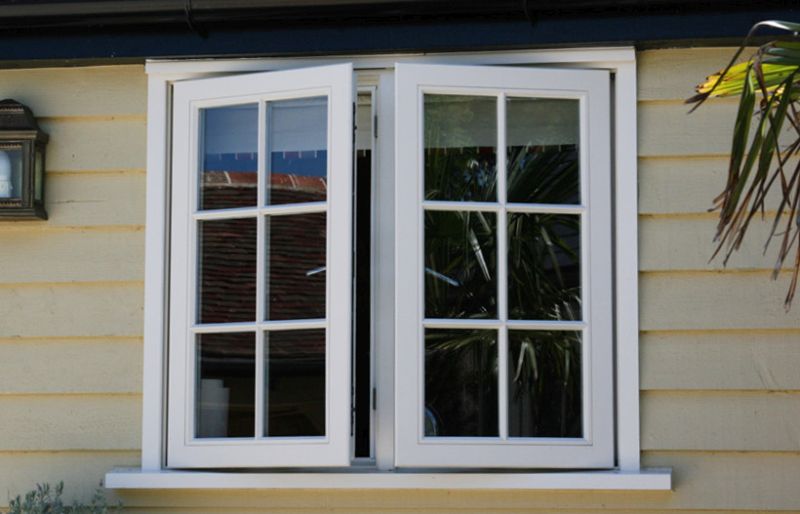
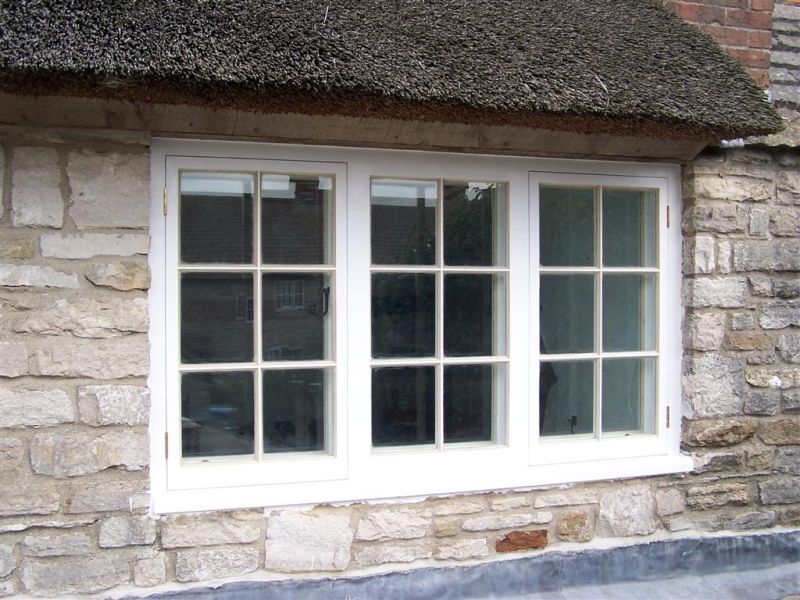
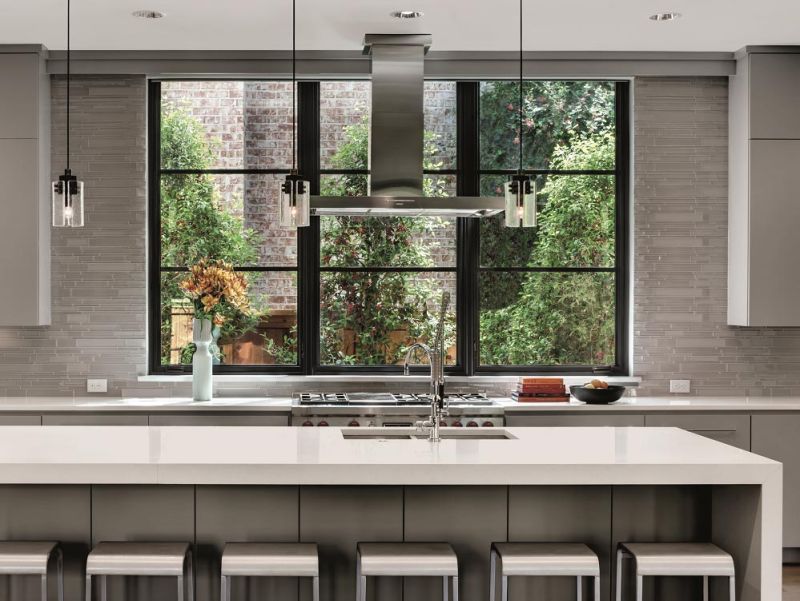
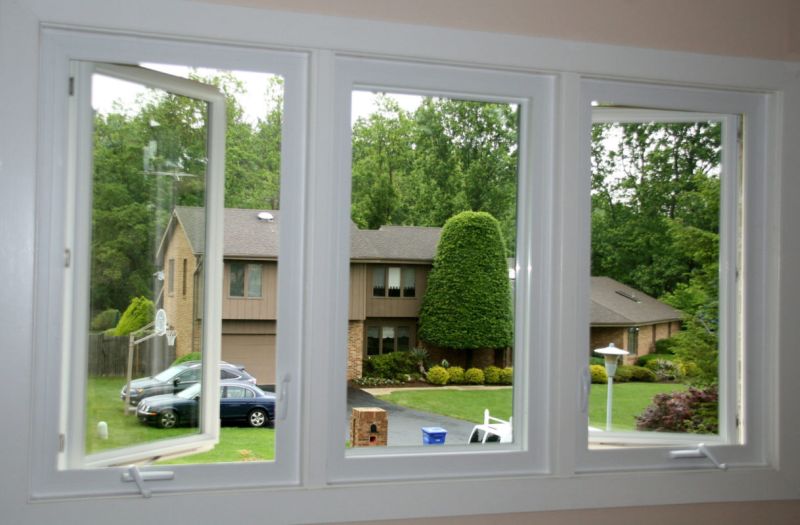
2. Awning Windows
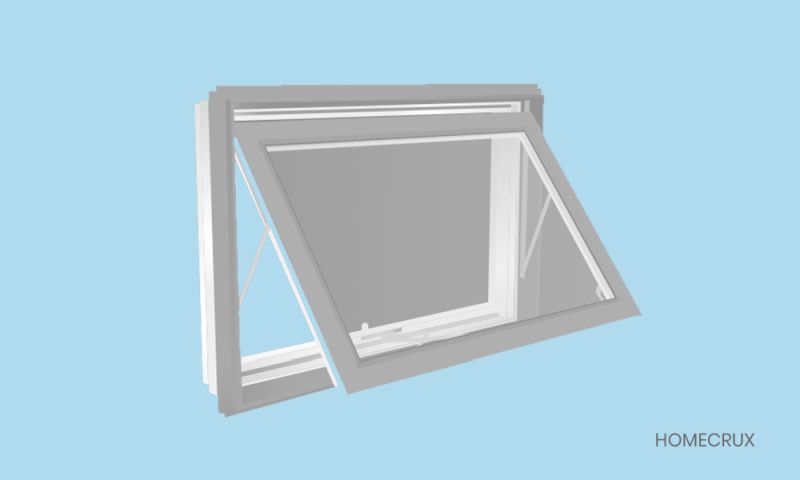
Awning windows are almost similar to casement windows, except these have hinges on the top. They open outward, providing enough ventilation and natural light. They work well in confined spaces, such as in a bathroom or kitchen.
Pros:
- Awning windows are generally installed higher in the walls, maximizing ventilation without letting in rainwater
- Ideal for wet or damp climates due to their weather-tight construction
- These window designs are versatile and perfect replacement windows as they can be combined with other window types
Cons:
- They get dirty easily thus require frequent cleaning
- Not a good option for emergency escape
Awning Window Design Ideas for Home
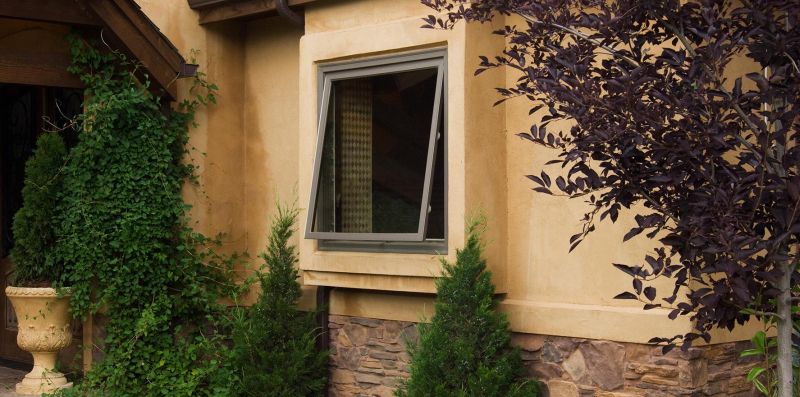
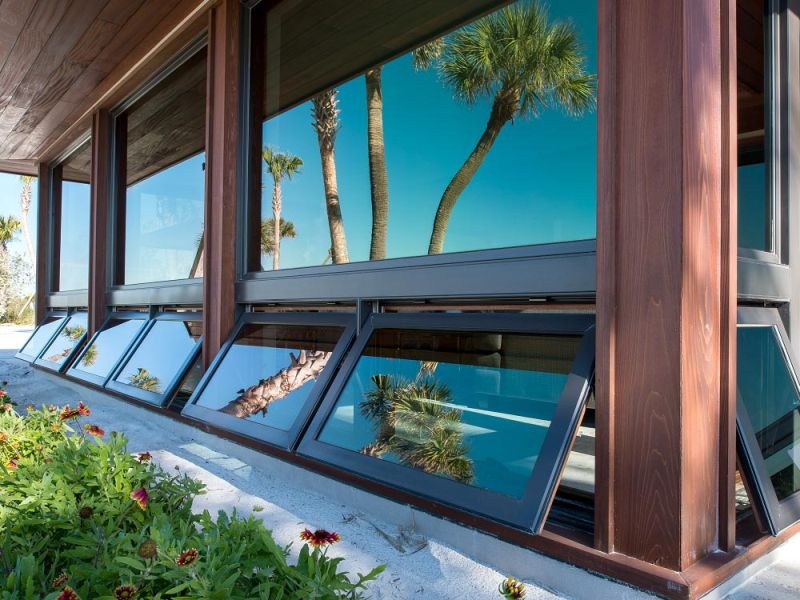
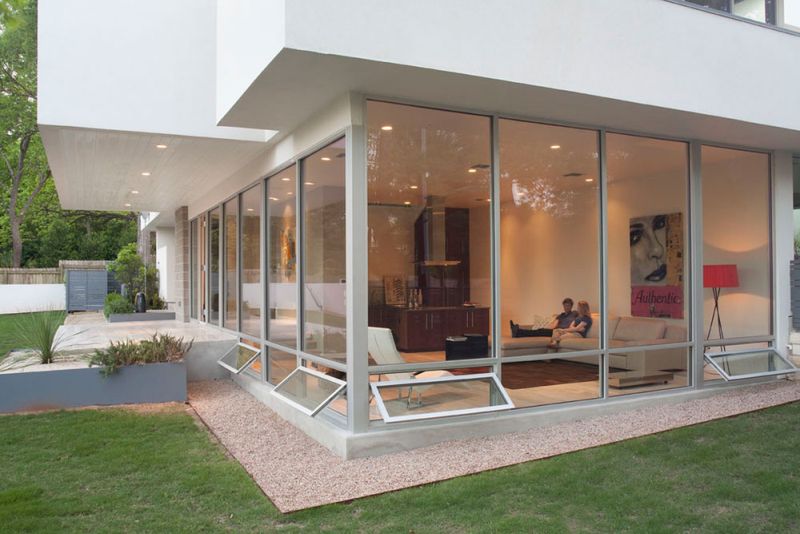
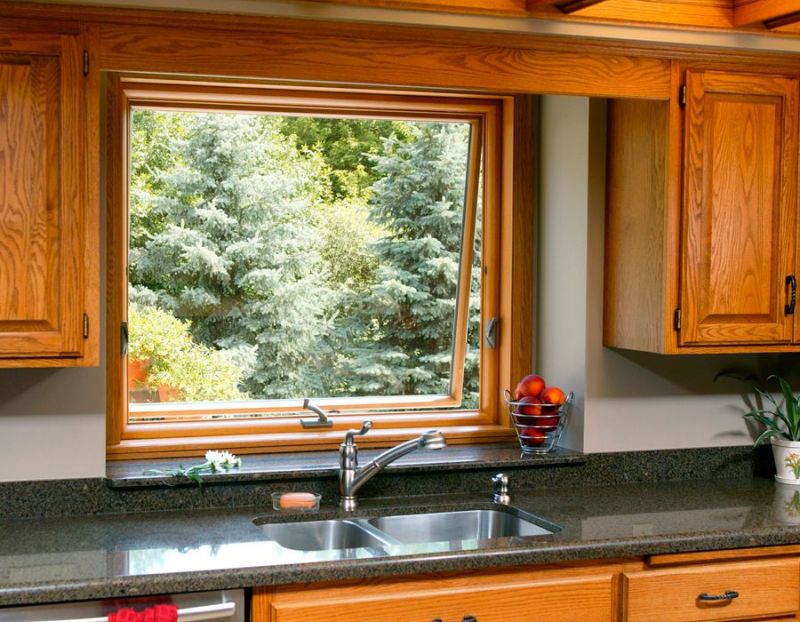
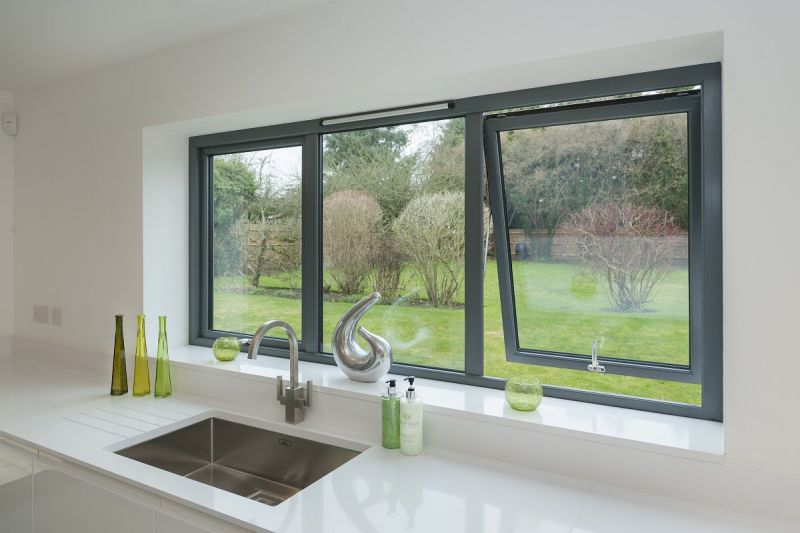
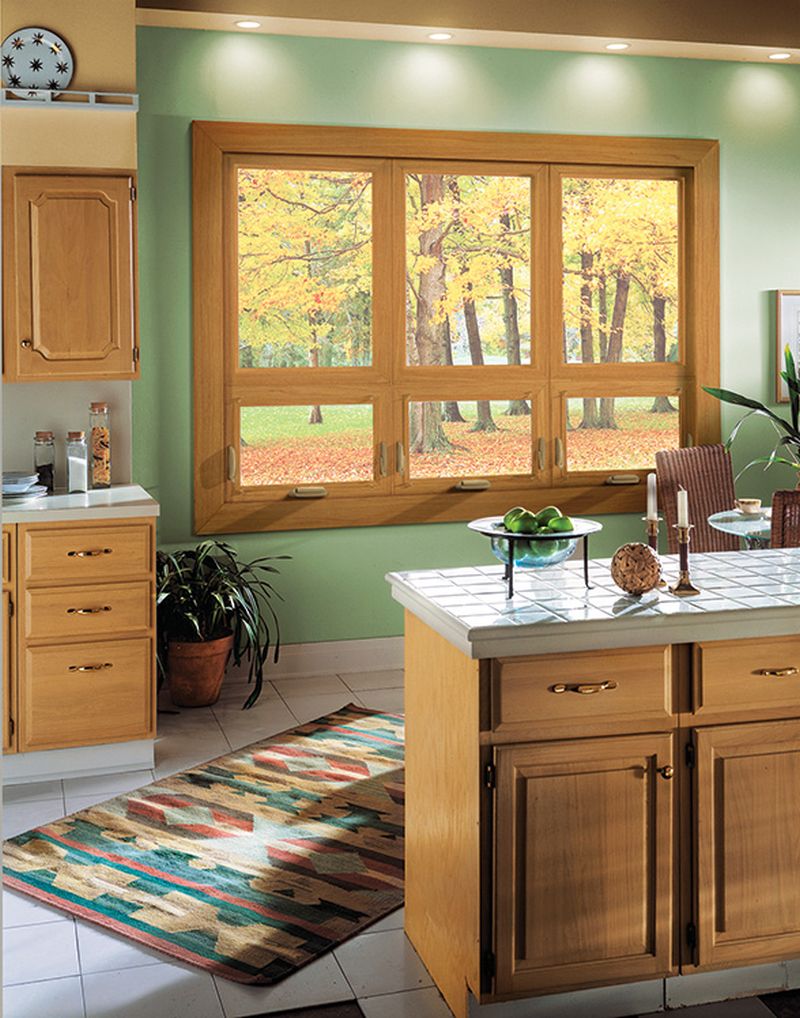
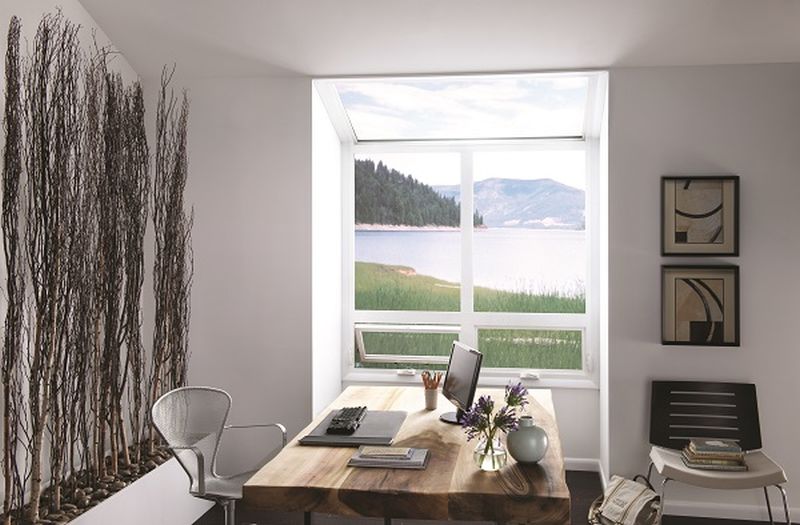
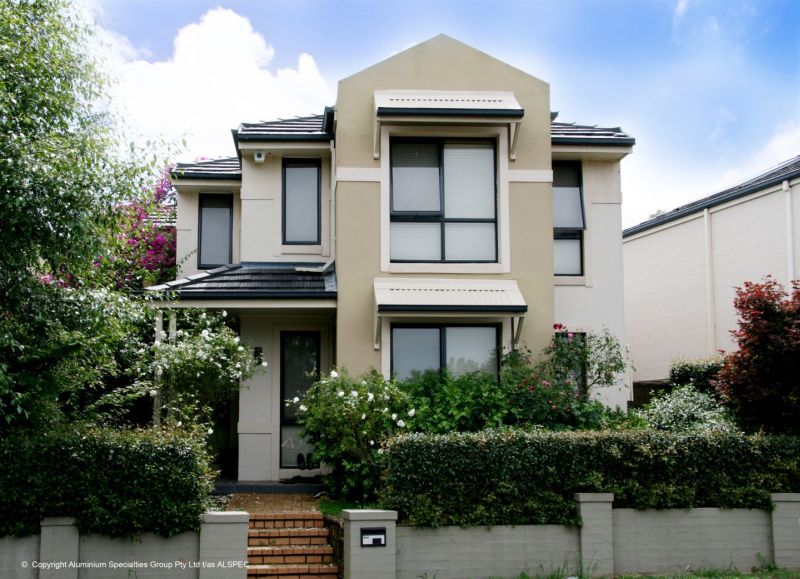
3. Picture Window
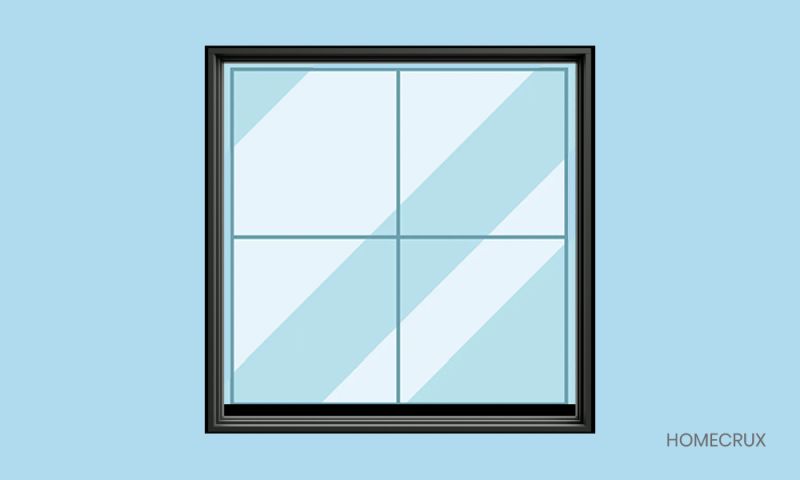
If you ever wanted to replace your opaque doors or walls with see-through glass windows, then picture windows are recommended. They are commonly used in combination with additional windows for an attractive aesthetic. The best place to install picture windows is where they will offer the best views of the outside.
Picture windows are only meant to bring in natural light and offer an expansive view of the surrounding without interruption. The fact that picture windows are stationary and cannot be opened for ventilation should be considered before going for it.
Pros:
- No replacement cost, as there are no mechanical parts are involved
- Meant to bring in natural light and heat
- Low maintenance
Cons:
- Heat gain in summers
- Lack of ventilation
- Not very secure
Picture Window Design Ideas
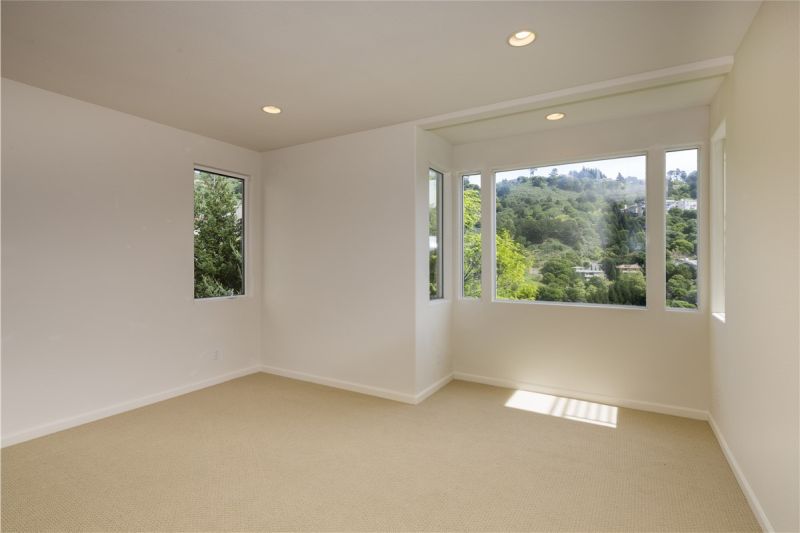
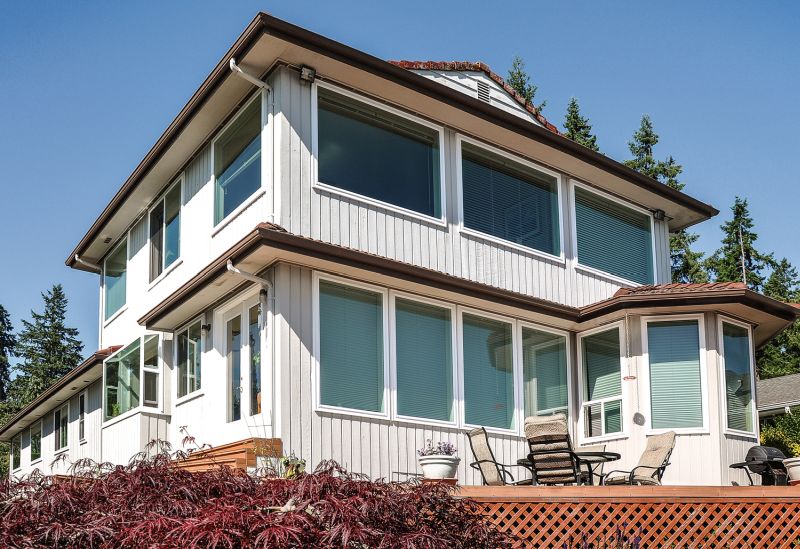
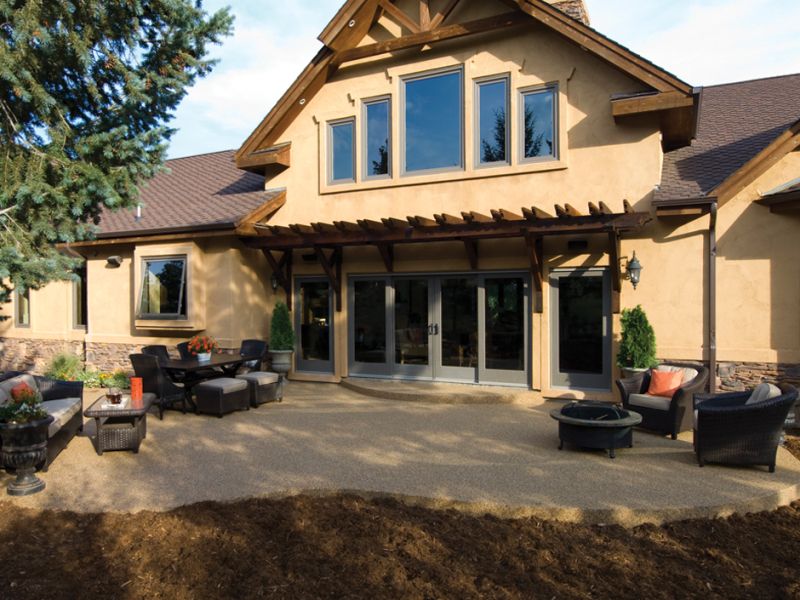
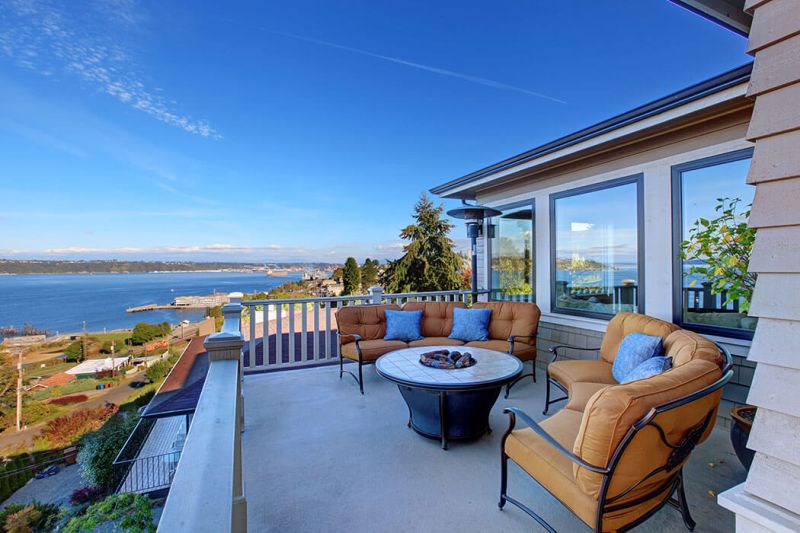
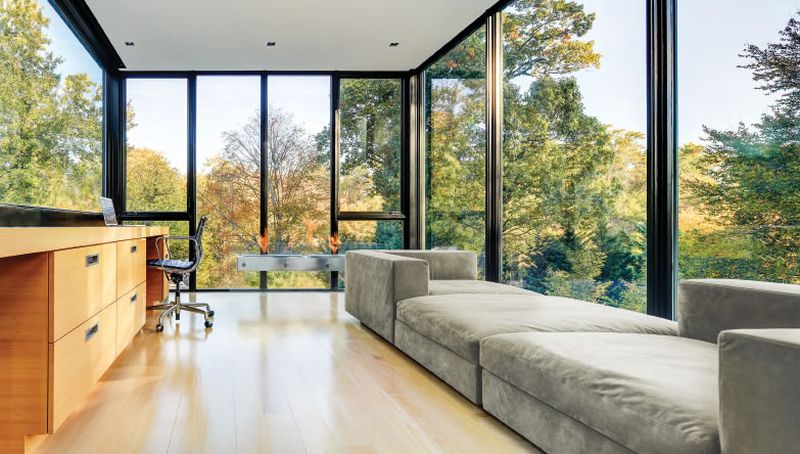
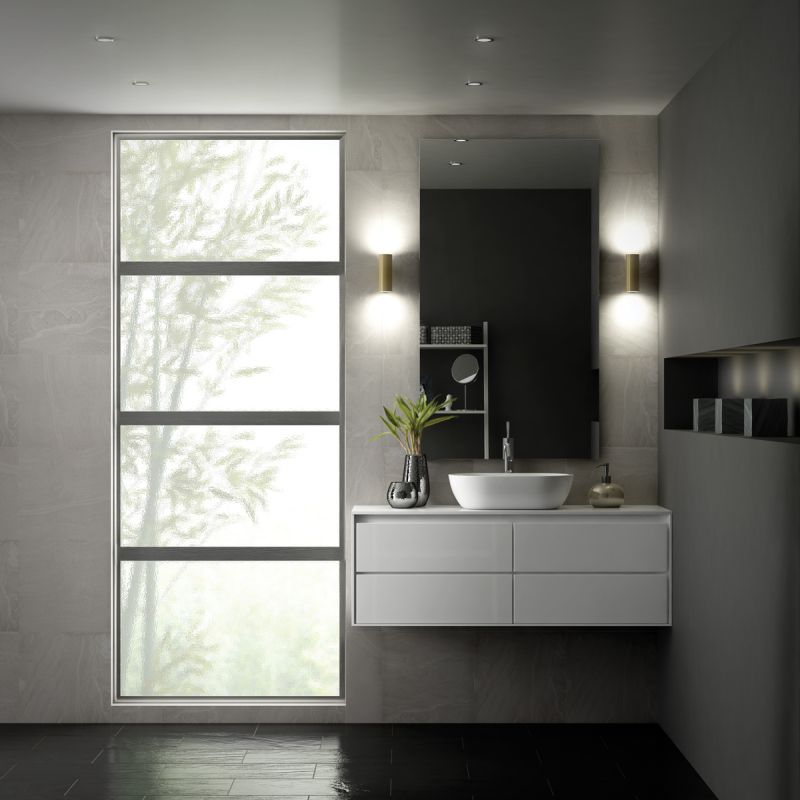
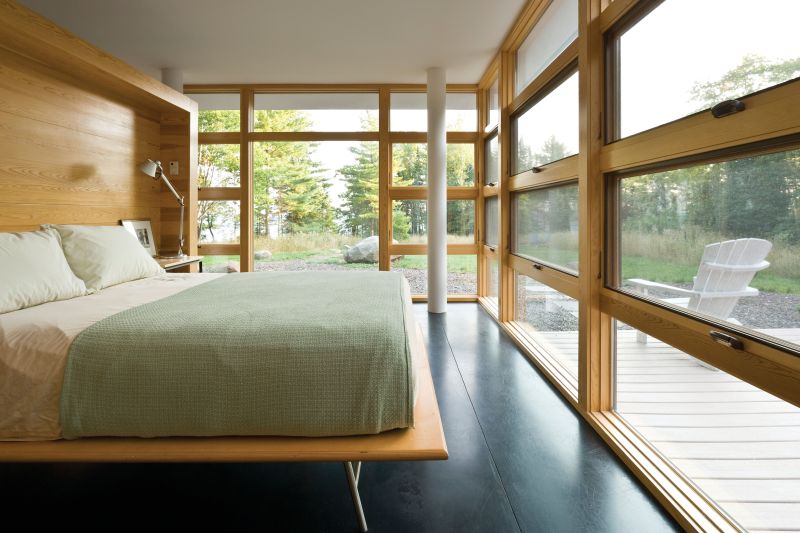
4. Single-Hung and Double-Hung Windows
When practicality meets simplicity in the window industry, it leads to the creation of these windows. The major difference here is the number of operable sashes that slide upwards and downwards for ventilation. These windows are efficient in terms of both, functionality and energy, as well as facilitate ventilation, making them perfect replacement windows.
| Also Read: How to Update Old Windows to Improve Energy Efficiency
Single-Hung Windows
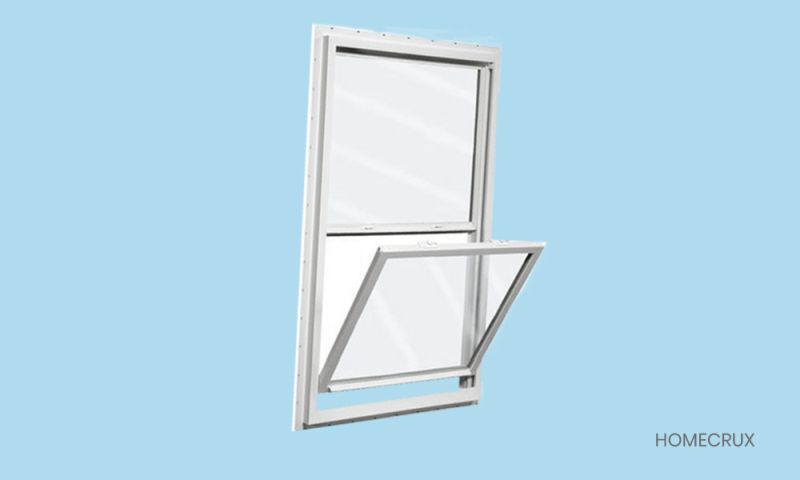
Pros:
- Affordable pricing
- Less sliding issues
- Easy installation
Cons:
- Less air circulation
- Available in small size only
Double-hung windows
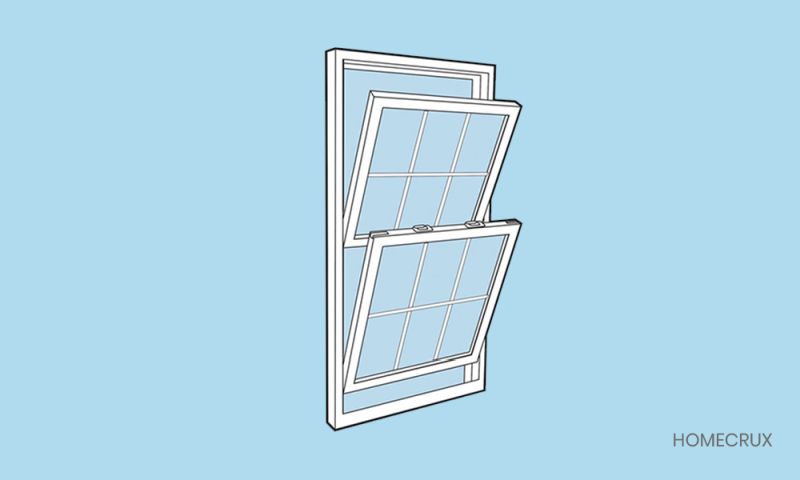
Pros:
- Ease of cleaning and accessibility
- Increased energy efficiency and ventilation
- Can be used with window AC
- Available in a variety of sizes, styles, colors, and materials
Cons:
- Expensive
- They are not as airtight as other windows
- Require regular maintenance
Single-Hung and Double-Hung Window Design Ideas
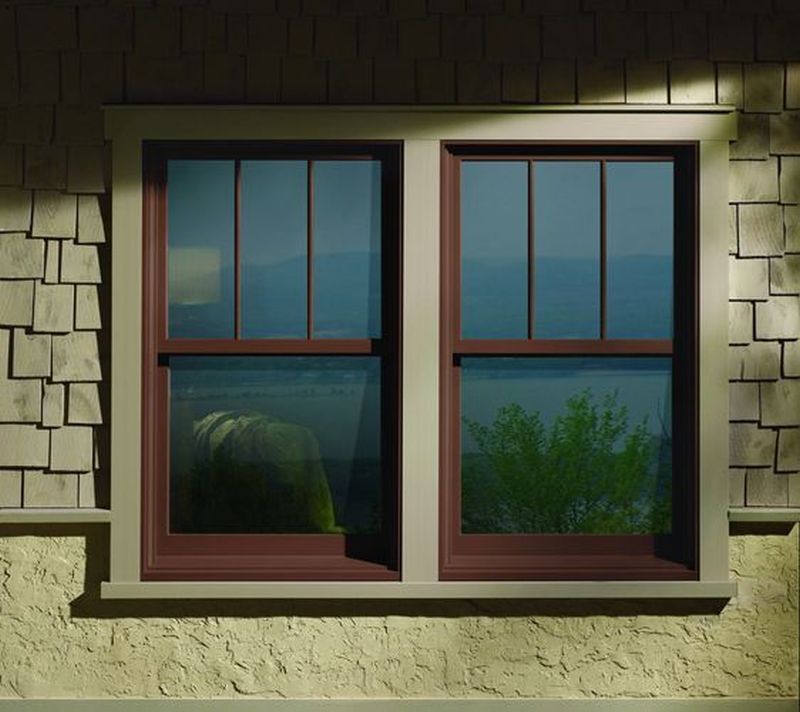
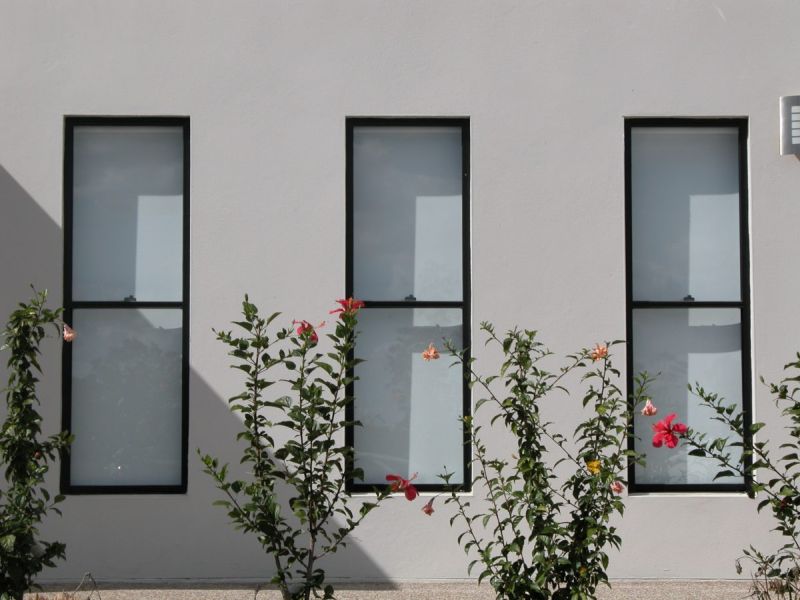
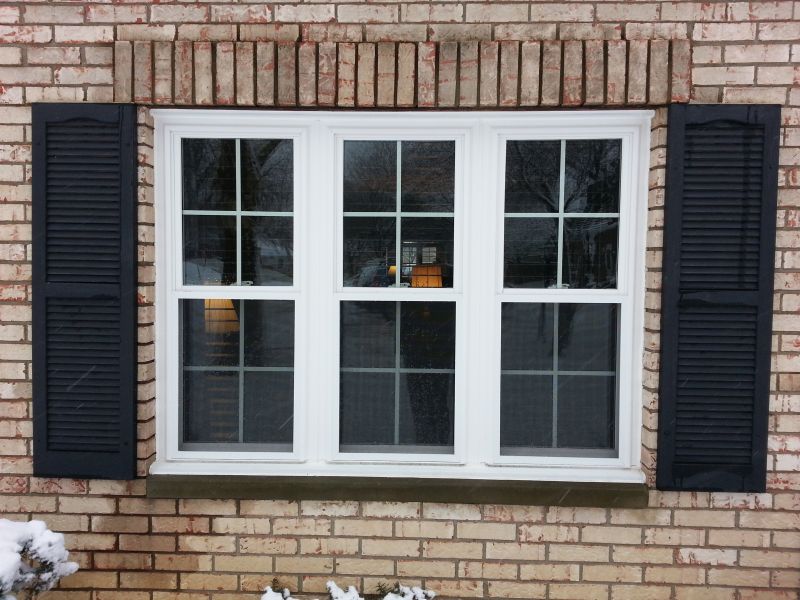
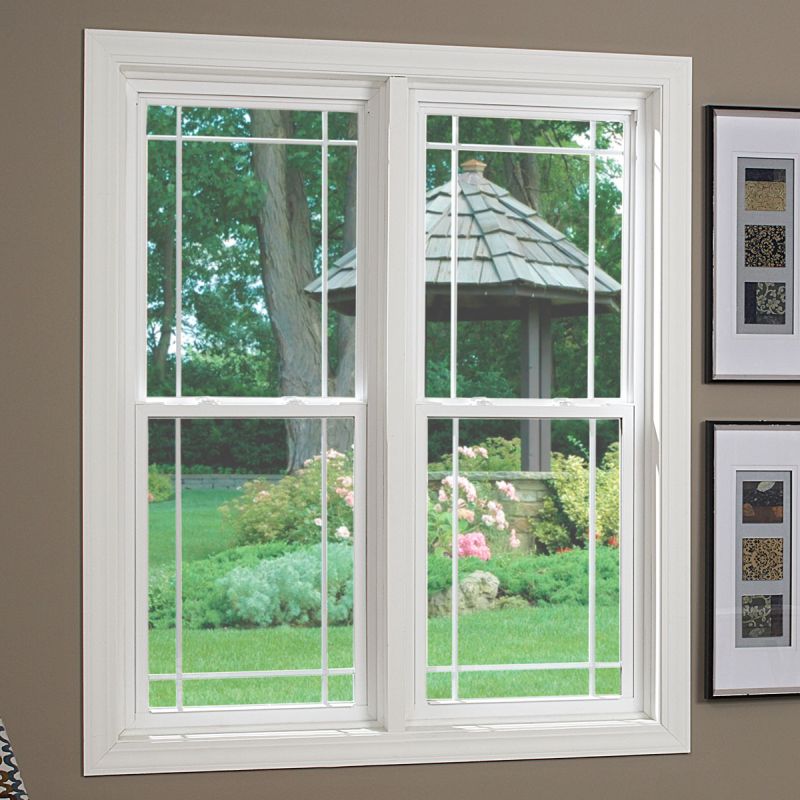
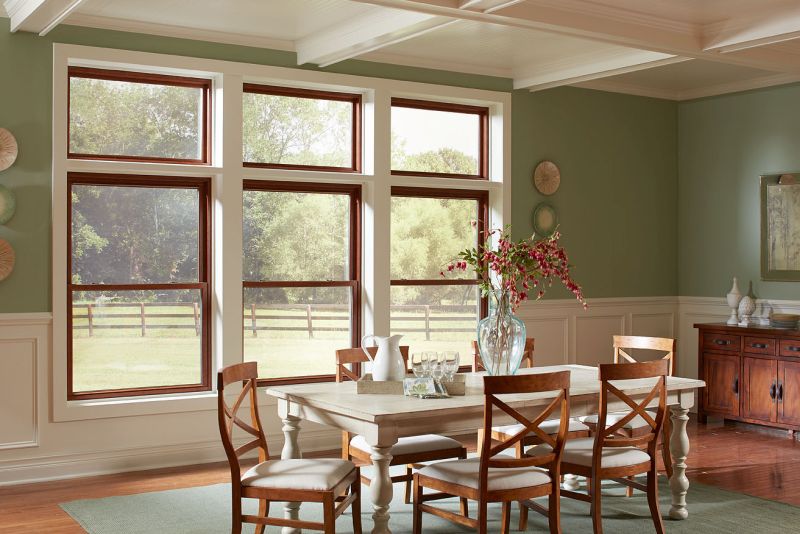
5. Bay and Bow Windows
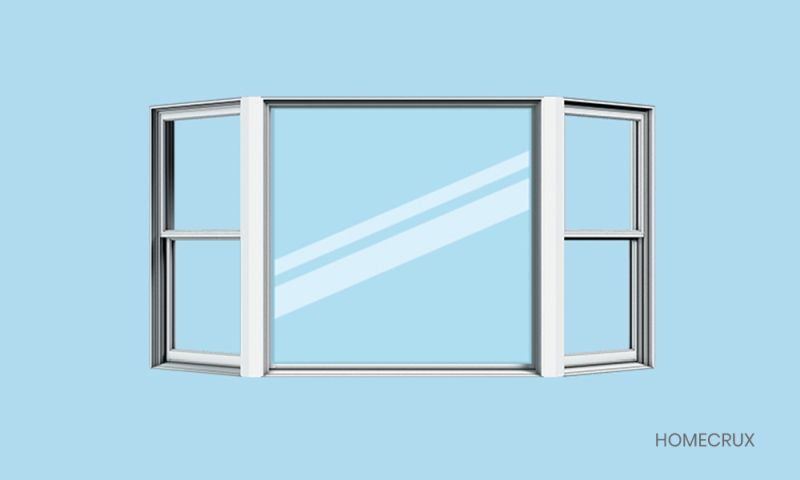
If you wish to make your small room feel larger, then bay and bow windows are the right choice. At first glance, both of them look alike, but they have major differences in length and shape. Usually, bay windows comprise three windows of varying sizes, creating a rounded appearance on the outside of the building. On the other hand, a bow window is made up of three to six windows of equal size and shape, offering clean straight lines.
These windows are ideal for small spaces as they are installed ahead of the exterior wall of a home. In most cases, they are combined with pictures, sliders, or casement windows, making it a much desirable option. With the right material put to work, bay or bow windows can turn out to be a fruitful investment.
Pros:
- Brings in a lot of natural light and air
- Enhanced view
- Creates extra space
- Adds value to the property
- Different styles available
Cons:
- Hard to replace
- It is difficult to install hardware on these windows
- Higher repair and maintenance cost
Bay and Bow Window Design Ideas
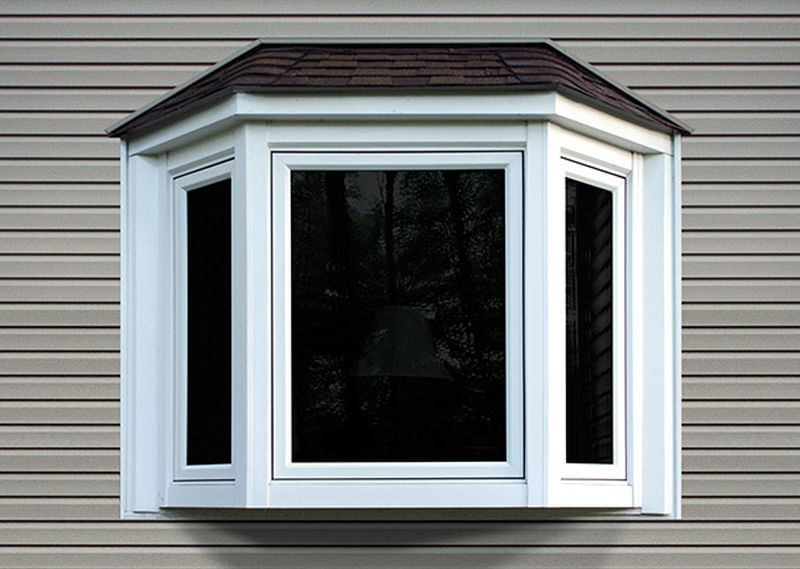
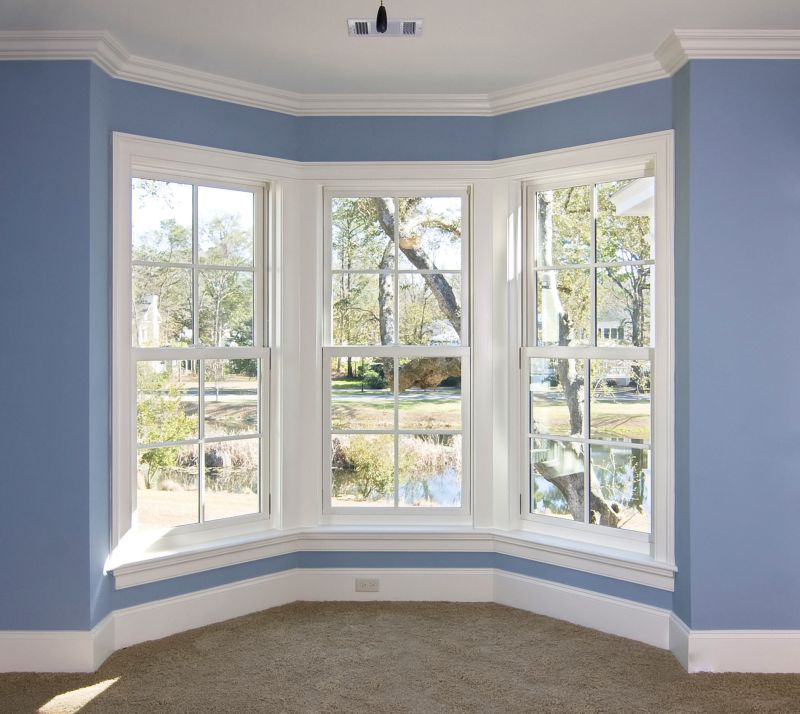
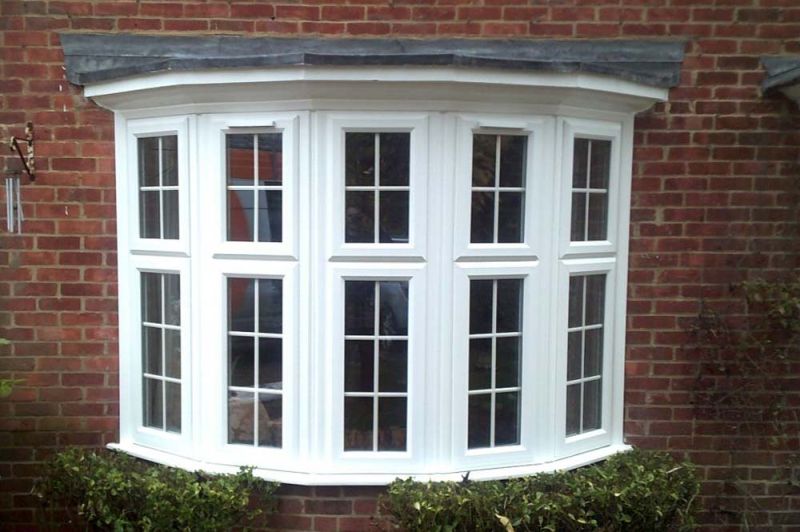
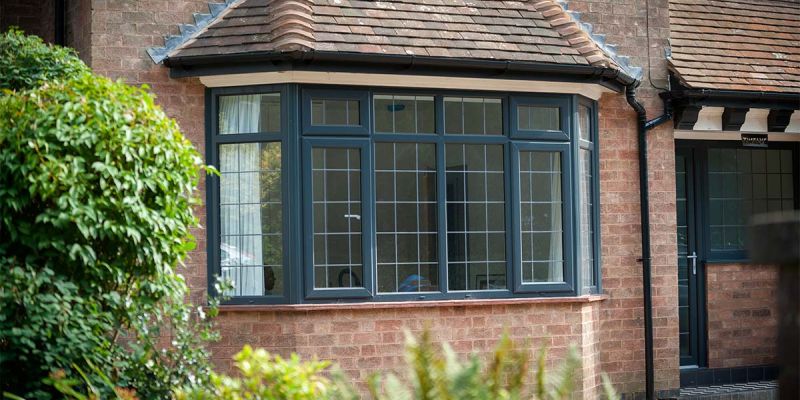
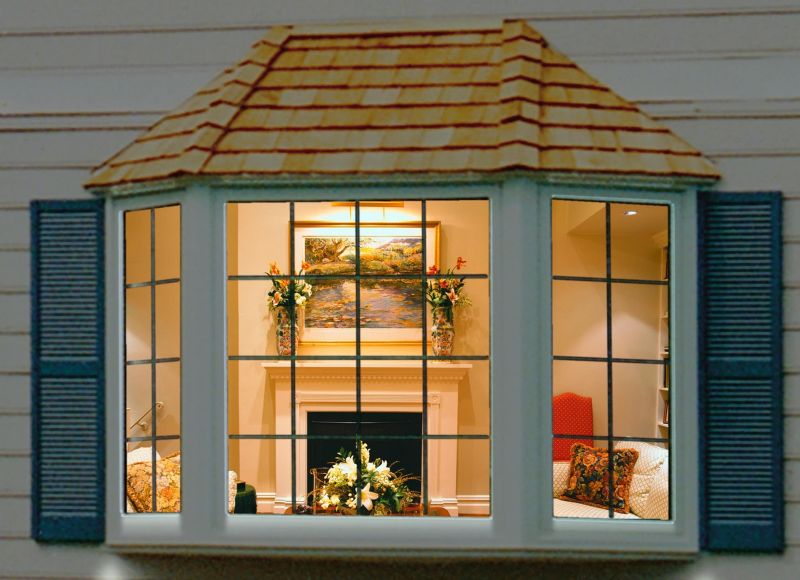
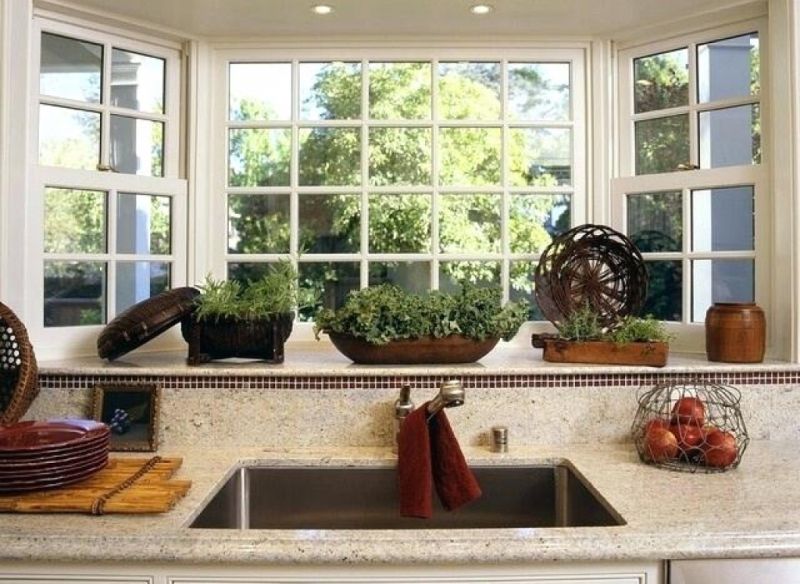
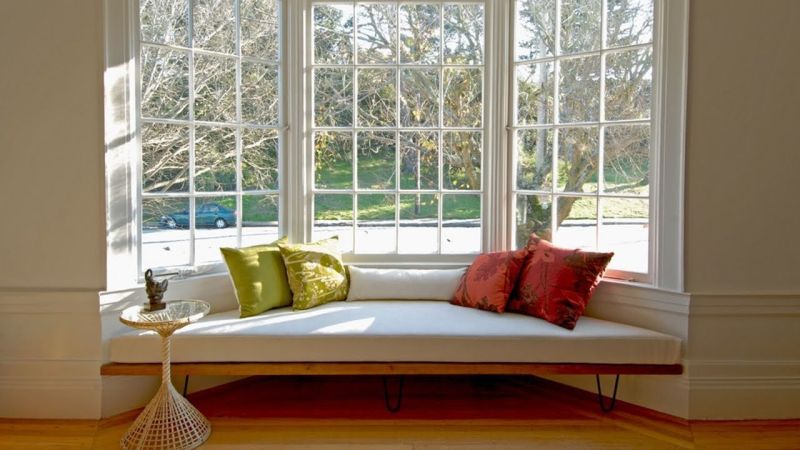
6. Slider Windows
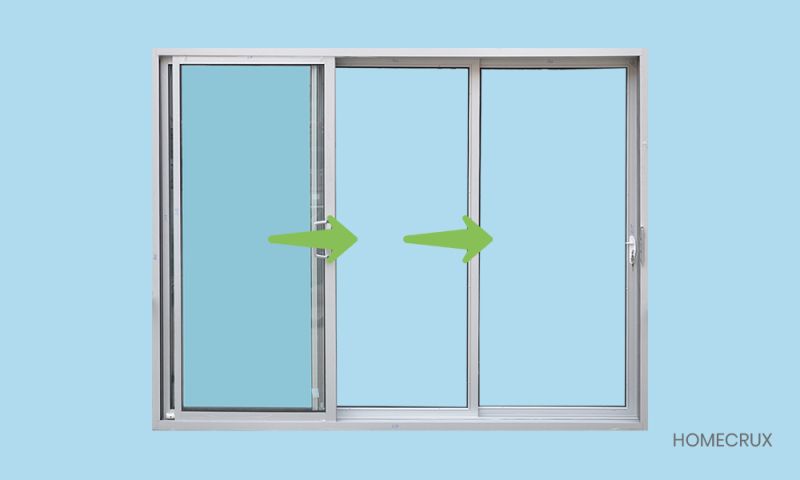
As the name gives out, these windows slide horizontally or vertically and bring in natural light and fresh air. Usually, slider windows are wider than they are tall. They are great for compact spaces, and also for bedroom egress requirements.
Pros:
- Easy to use and durable
- Available in different sizes
- Easy to clean and low maintenance
- Cost-effective
Cons:
- Prone to air leaks
- Limited color options
- Require regular cleaning
Slider Window Design Ideas
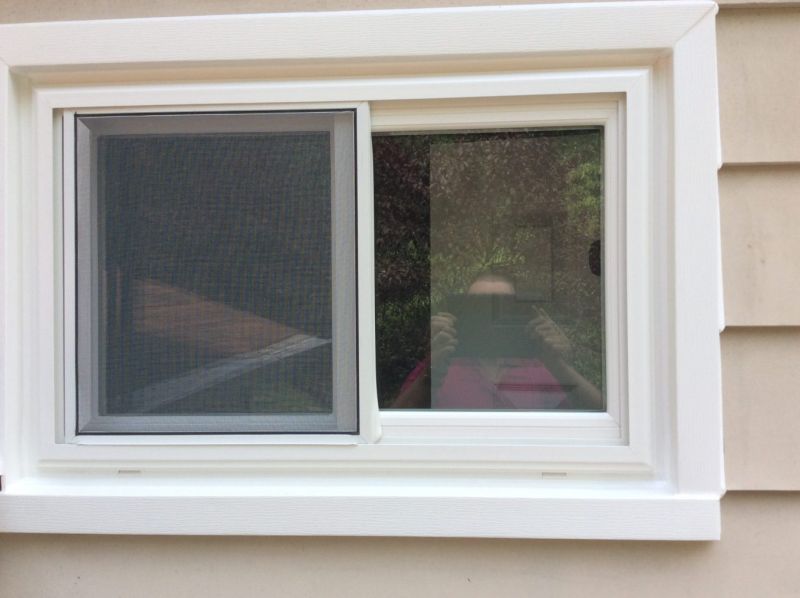
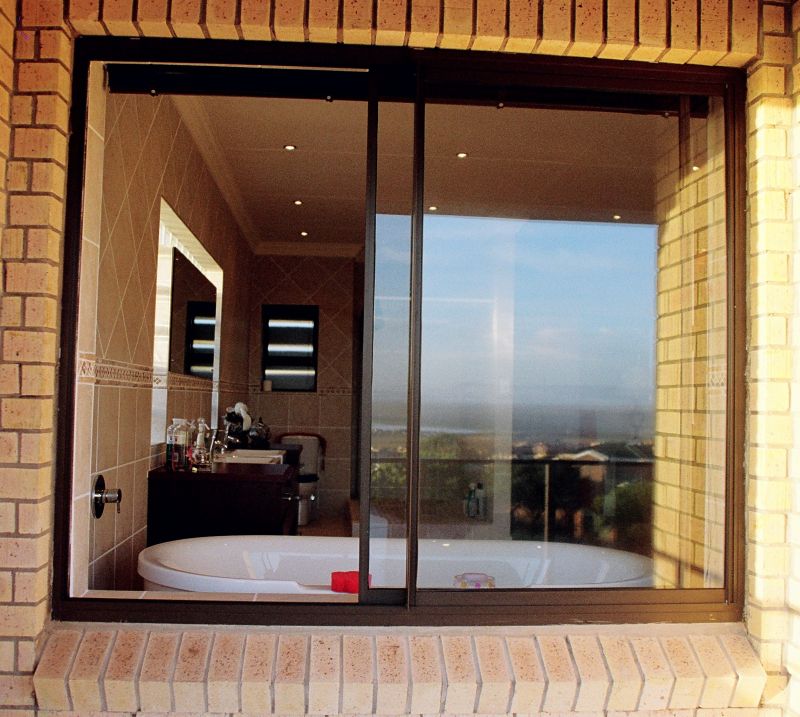
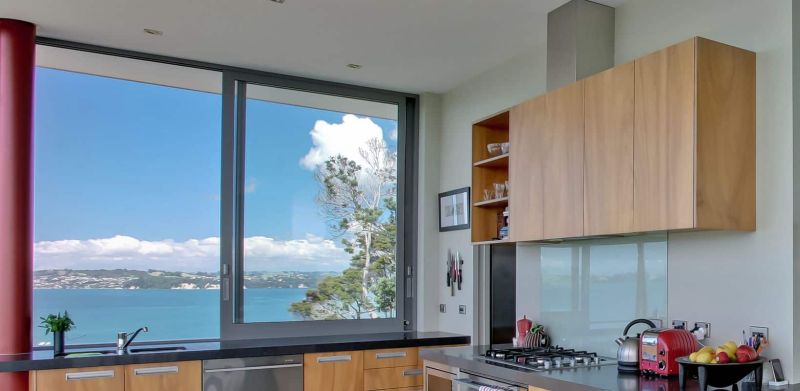
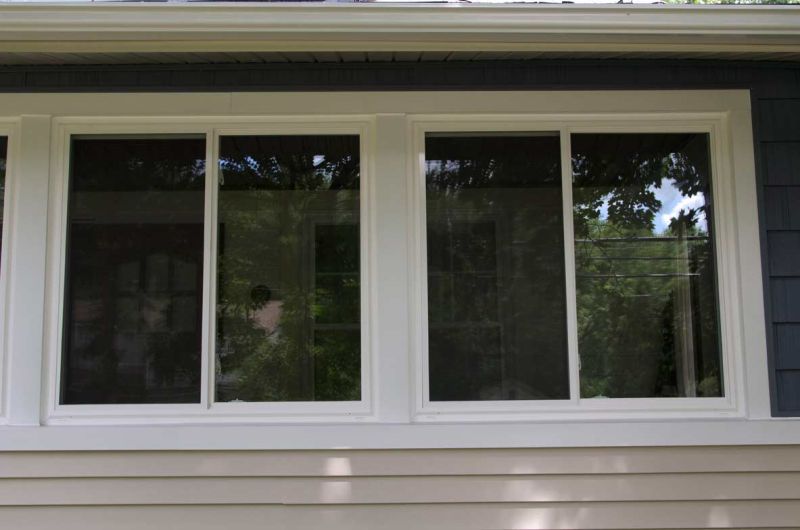
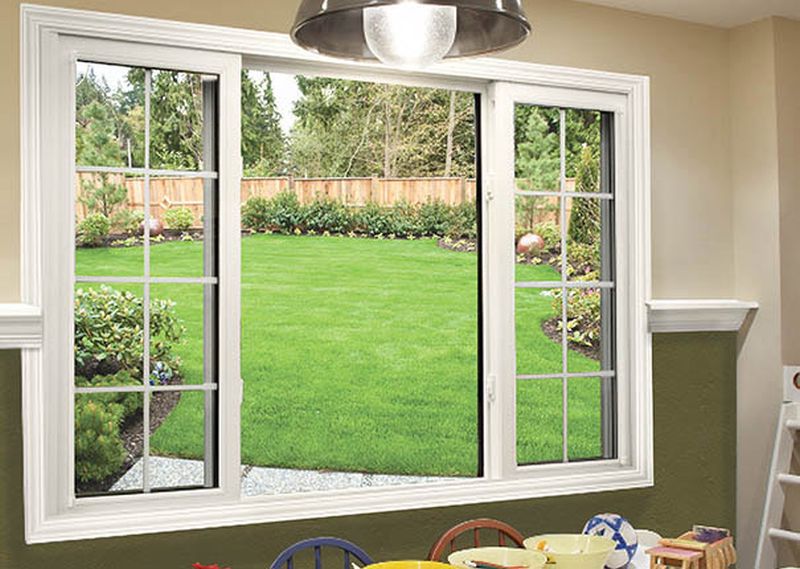
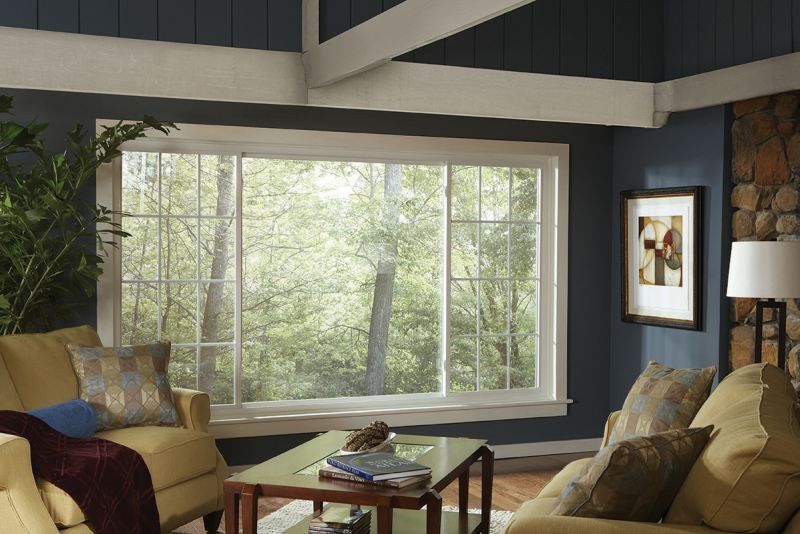
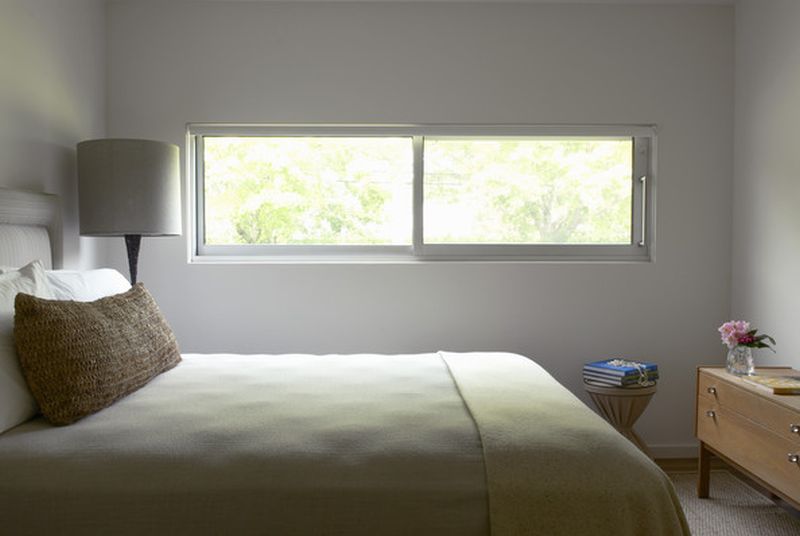
Window Types on the Basis of Placement
7. Clerestory Windows
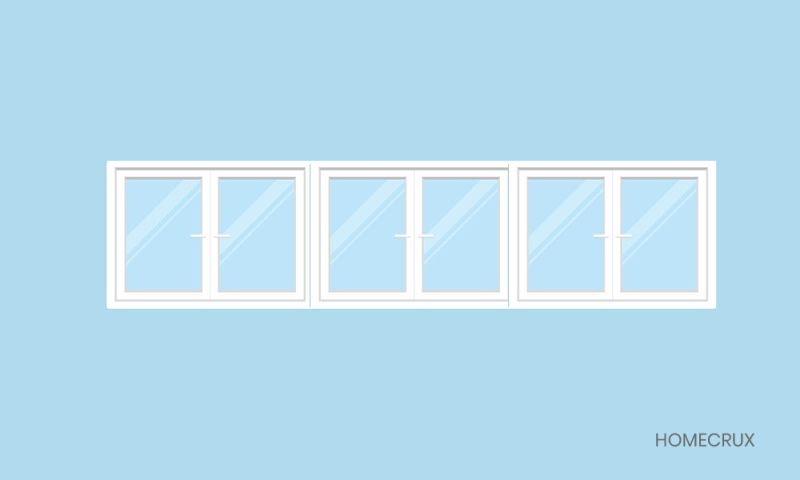
A series of stationary windows along the upper section of walls are generally called clerestory windows. They are meant to allow natural light into the room. You can find a number of tiny homes with such windows since they are effective in making the room look spacious and airy.
Pros:
- Bring in natural light
- Require less maintenance
- Perfect for long hallways
- Make an attractive addition to a home
Cons:
- Clerestories can cause overheating in the space
- Bad choice for bedrooms
- Difficult to shade owing to their placement
Clerestory Window Design Ideas
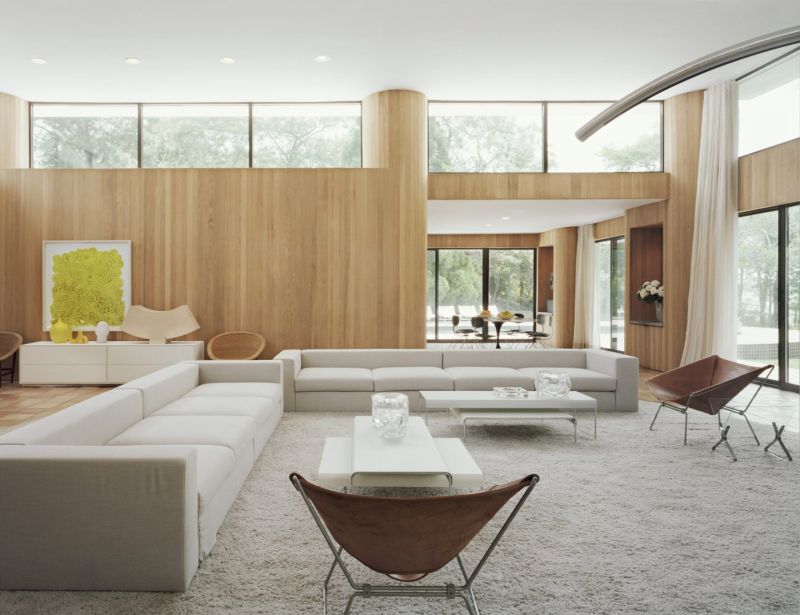
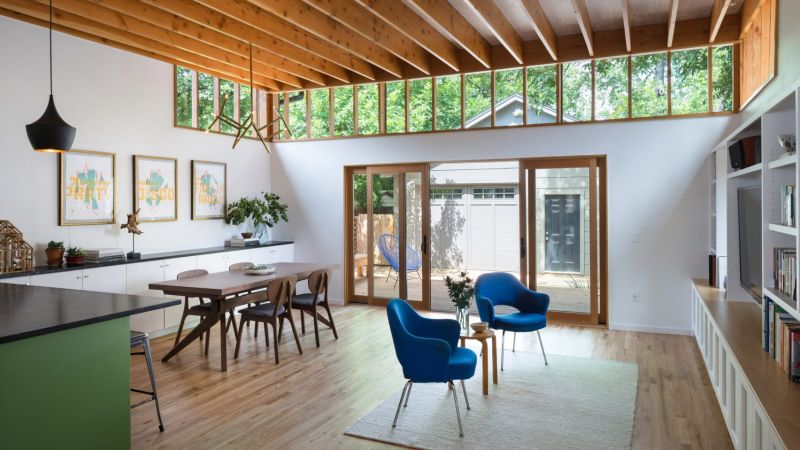
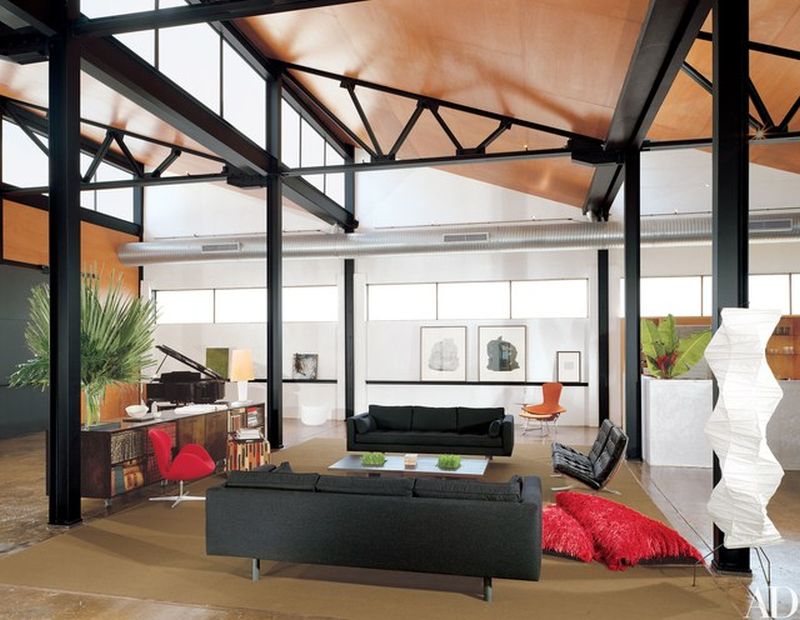
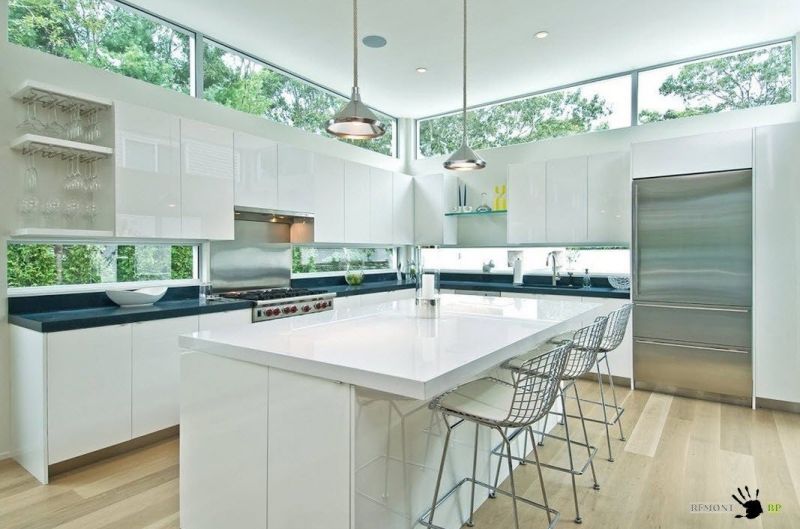
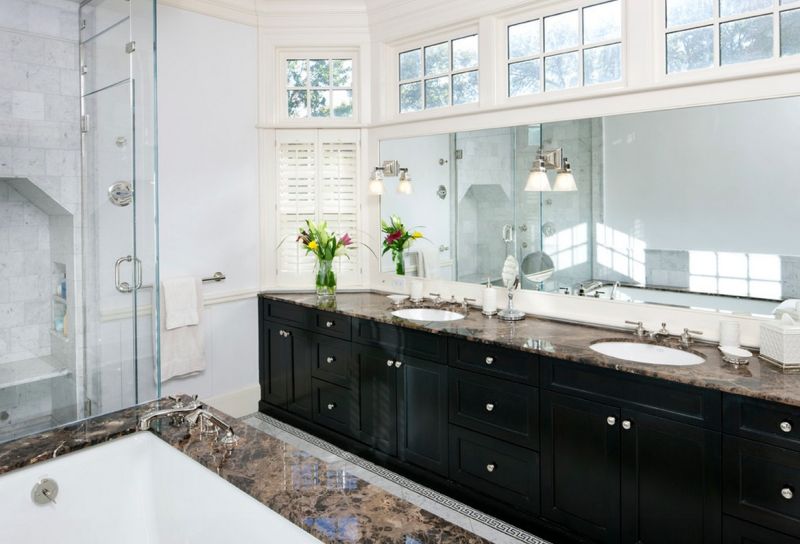
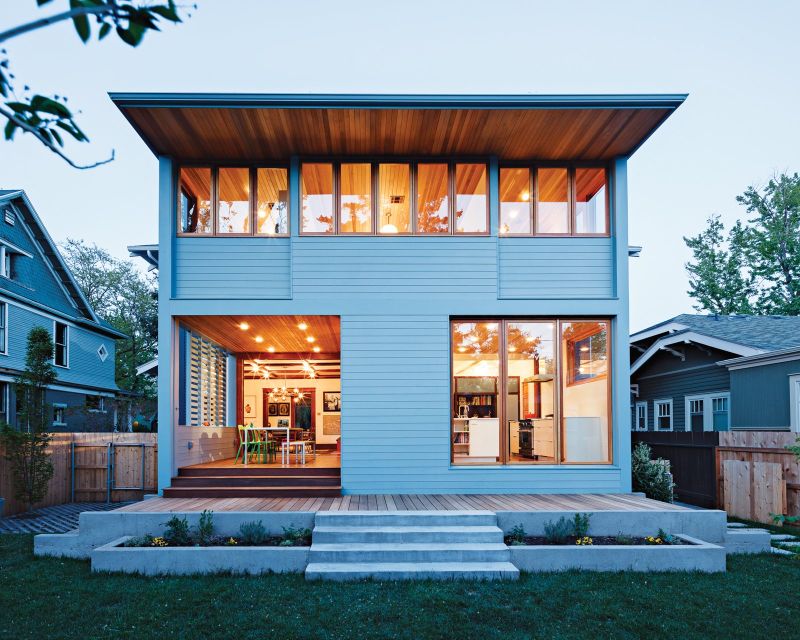
8. Transom Windows
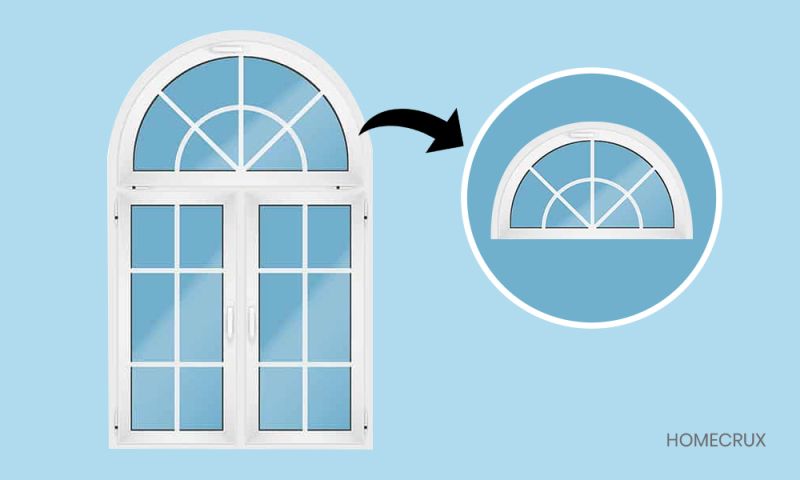
Transom window is a narrow, fan-shaped window set above windows or doors. They are usually meant to enhance the aesthetics and create a focal point on the entrance. Typically, they feature a semicircular shape, but can also be square or rectangular.
Pros:
- They add to curb appeal of a home
- Increase natural light and ventilation indoors
- Privacy isn’t choked
- Enhanced appearance
Cons:
- Transom windows are fixed and thus offer no ventilation
- Difficult to clean
Transom Window Design Ideas
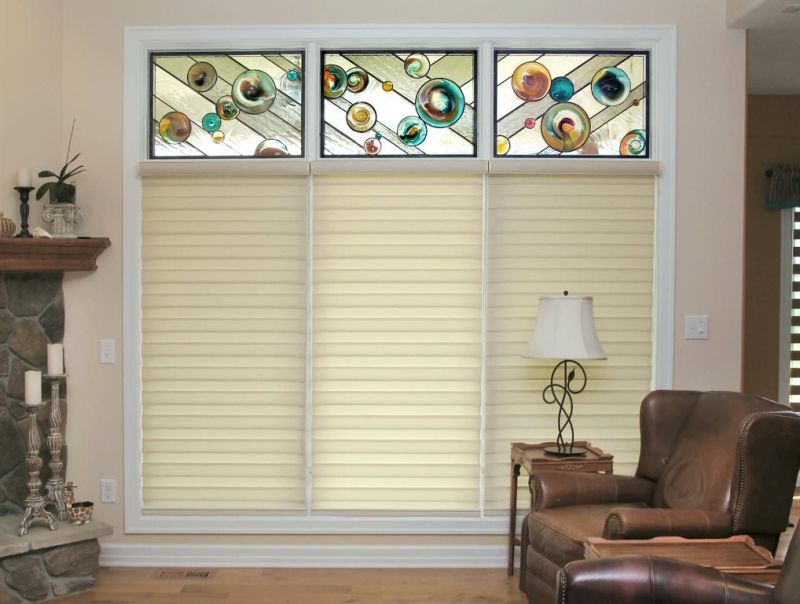
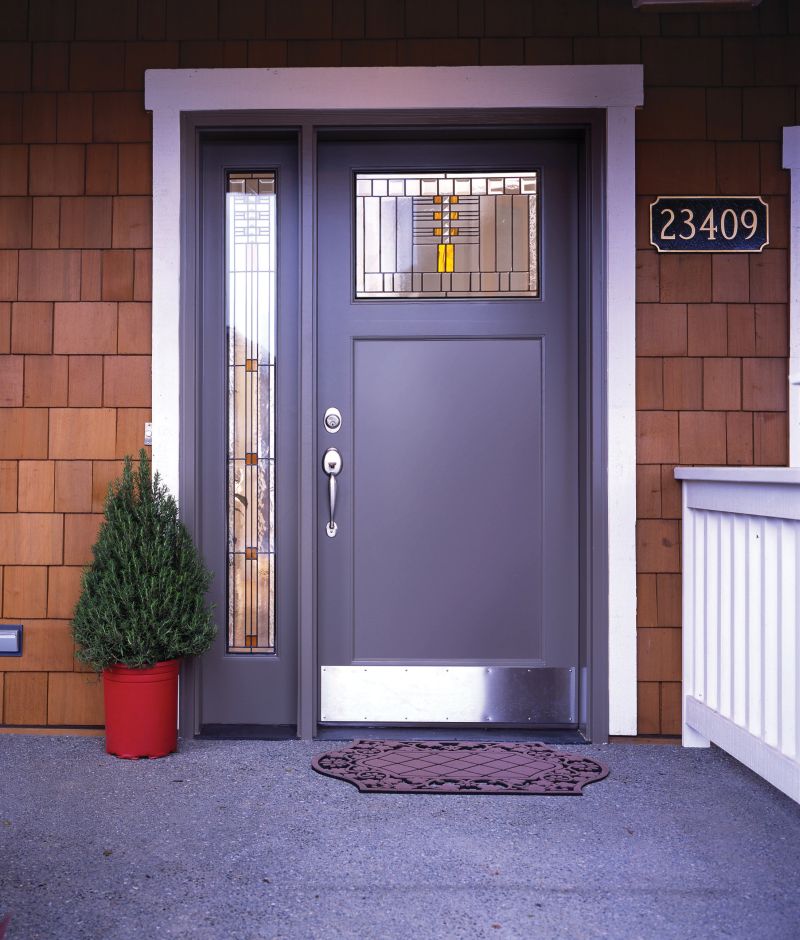
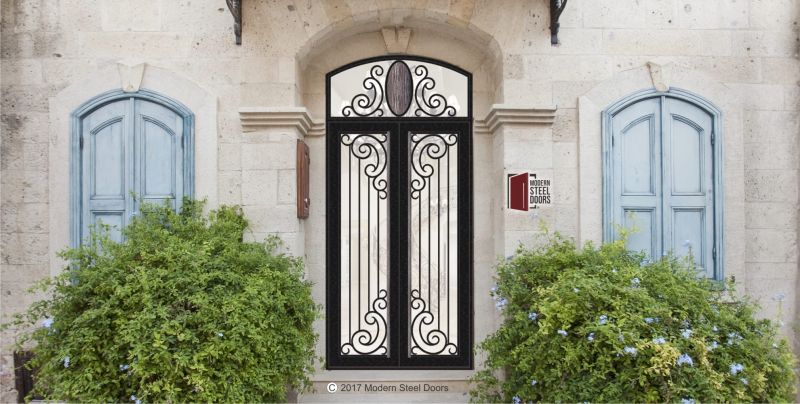
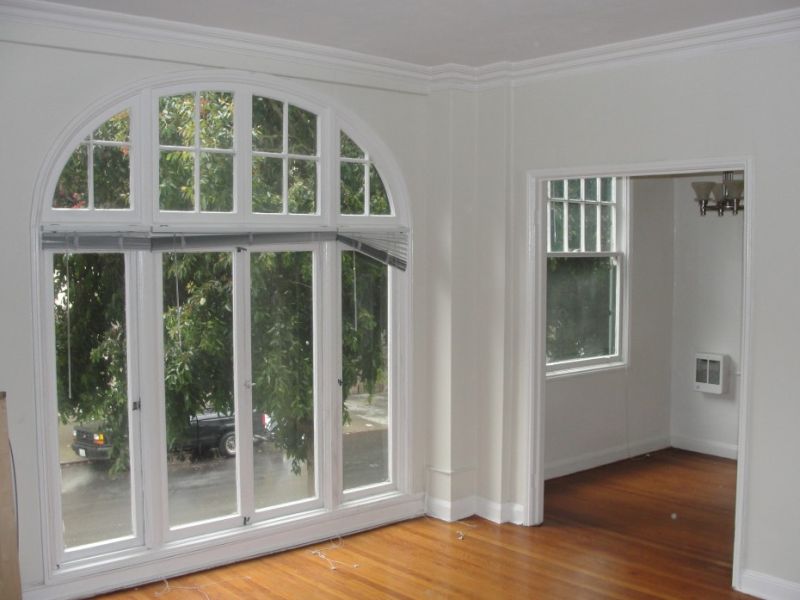
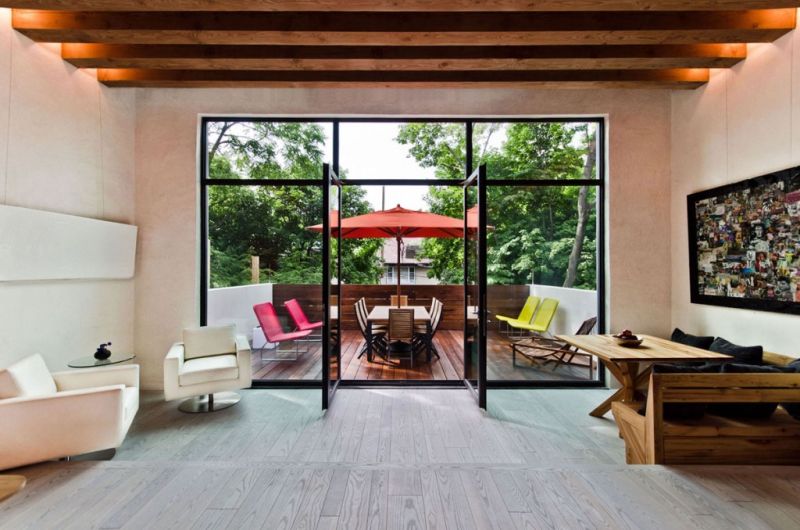
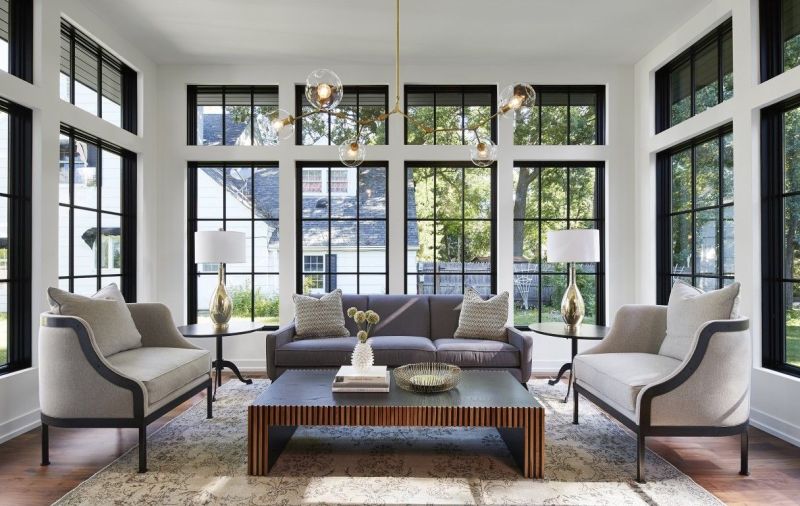
9. Dormer Windows
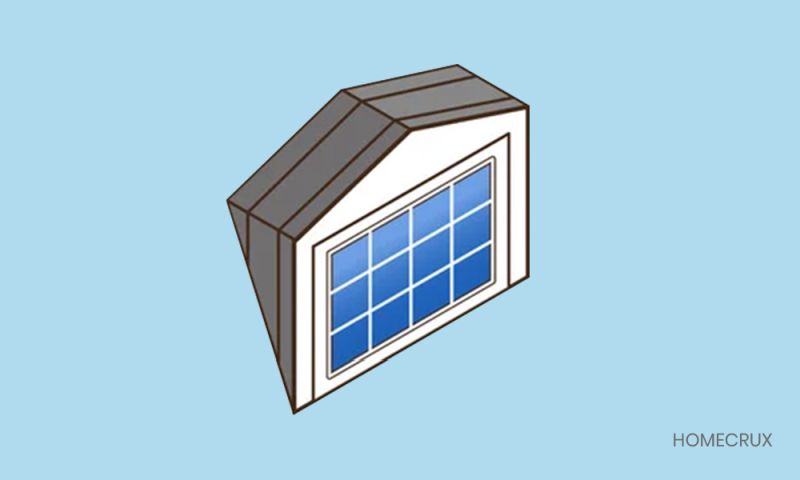
Dormer windows project vertically from a sloped roof and are commonly used to bring light into attics. They are useful not only for airing and brightening the space but also for adding a unique charm to the exterior design of the home.
Pros:
- Increase available space indoors
- Additional opening
- Improves the exterior look
Cons:
- Difficult to install
- High maintenance and cost
- Are prone to leakage
Dormer Window Design Ideas
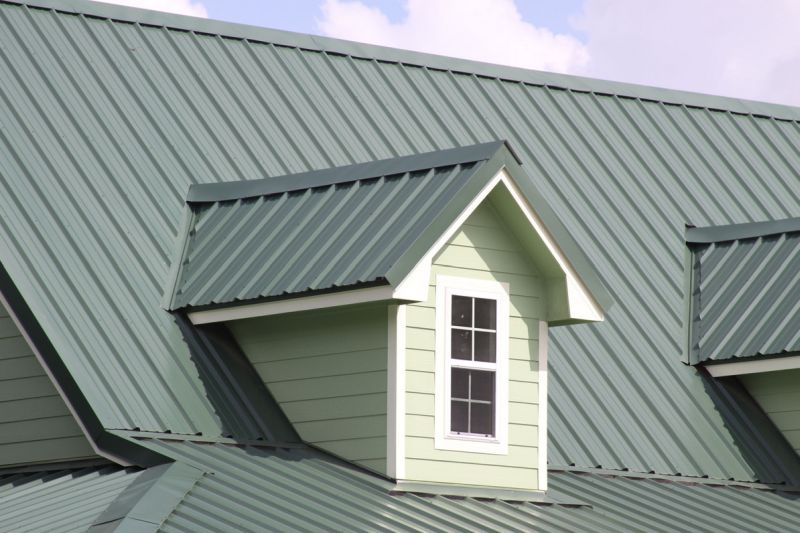
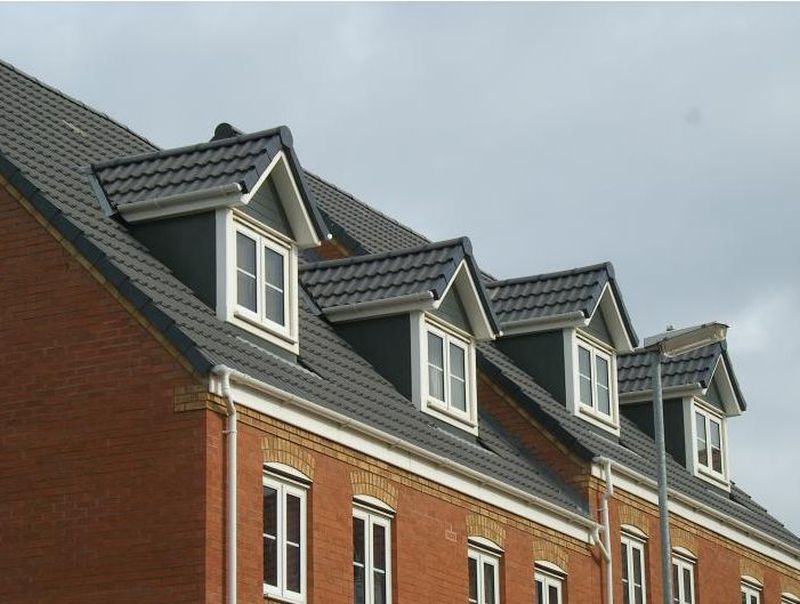
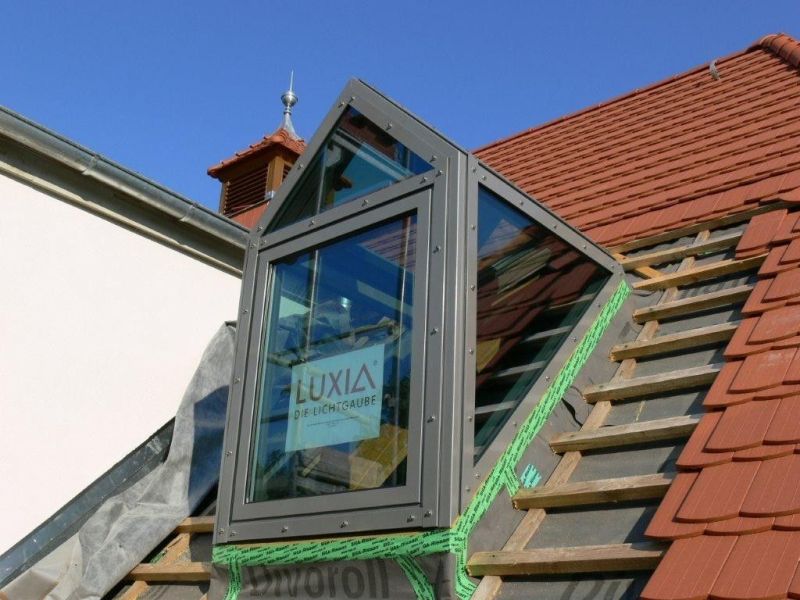
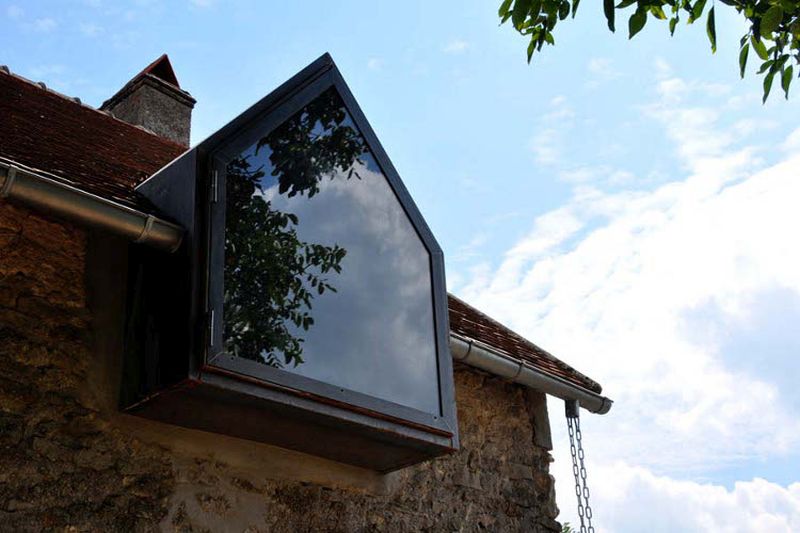
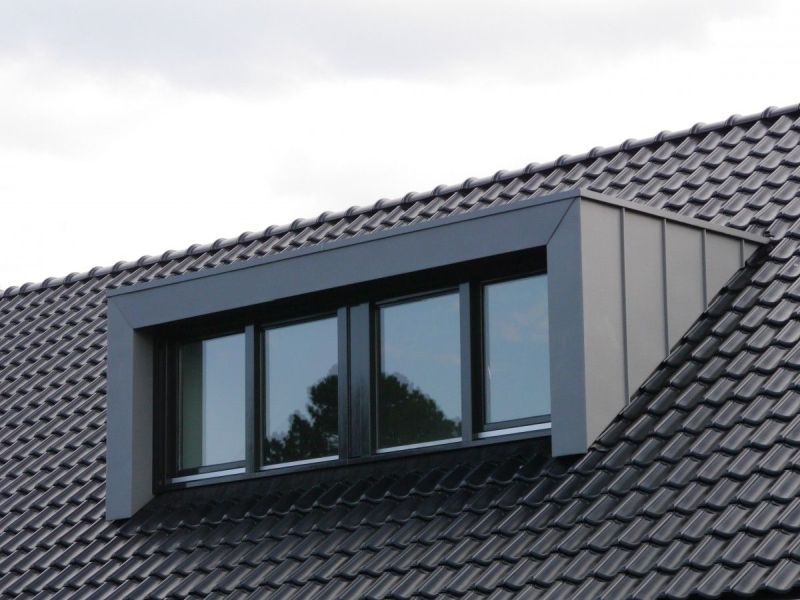
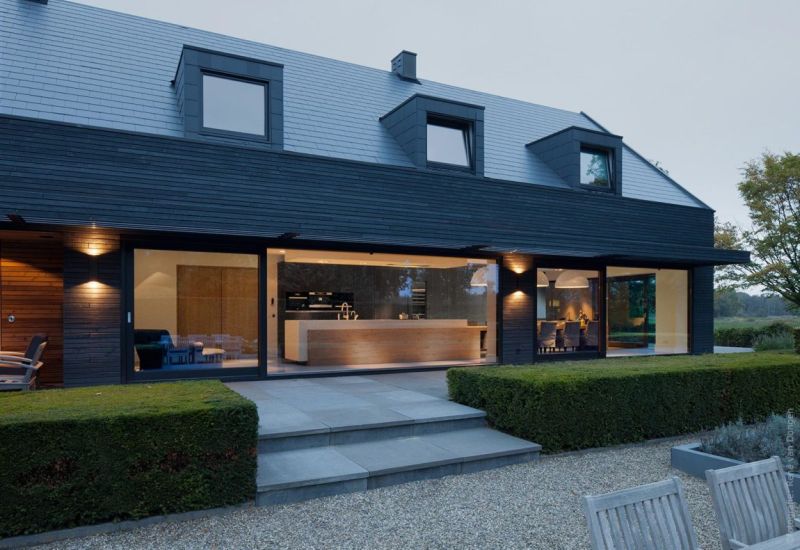
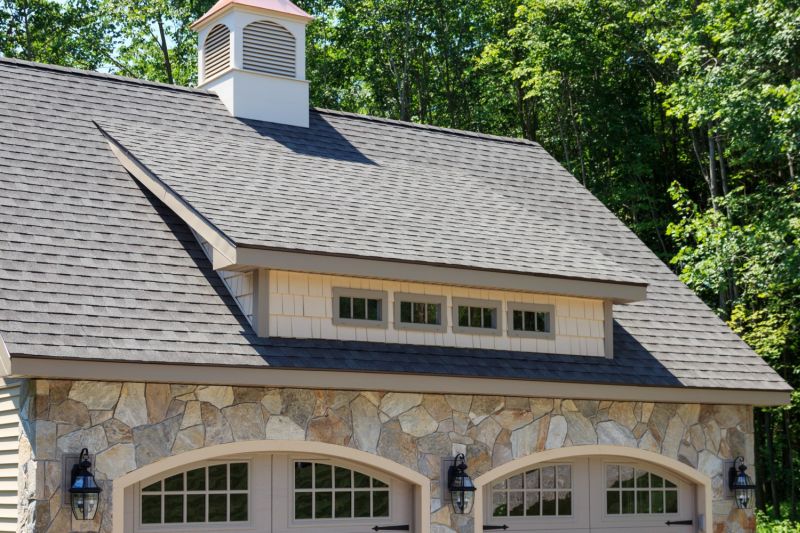
10. Corner Windows
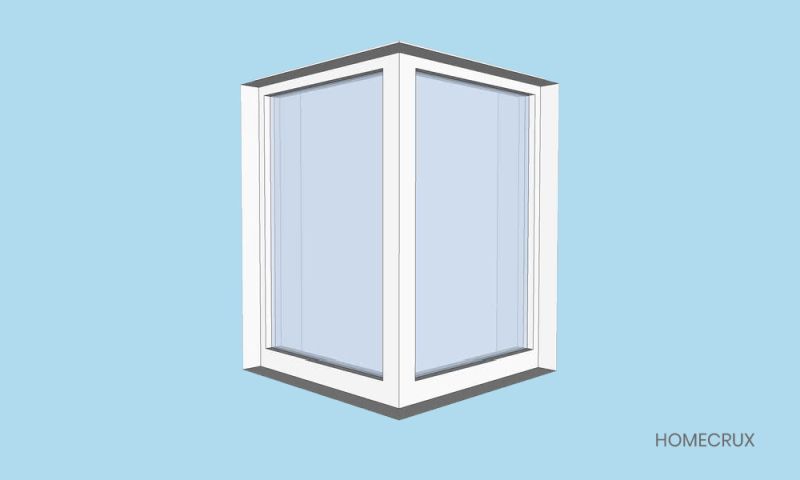
Corner windows are rare but surely a beautiful addition to a home. They provide benefits that are traditional, and not offered by rectangular windows; such as stylish design and increased light flow into the house.
Pros:
- Bring in light and add to the interior space
- Provide a unique statement to the house
- Maximize view
- Are perfect for a lounging nook
Cons:
- A less secure window type
- High construction cost
- Laborious to clean
Corner Window Design Ideas
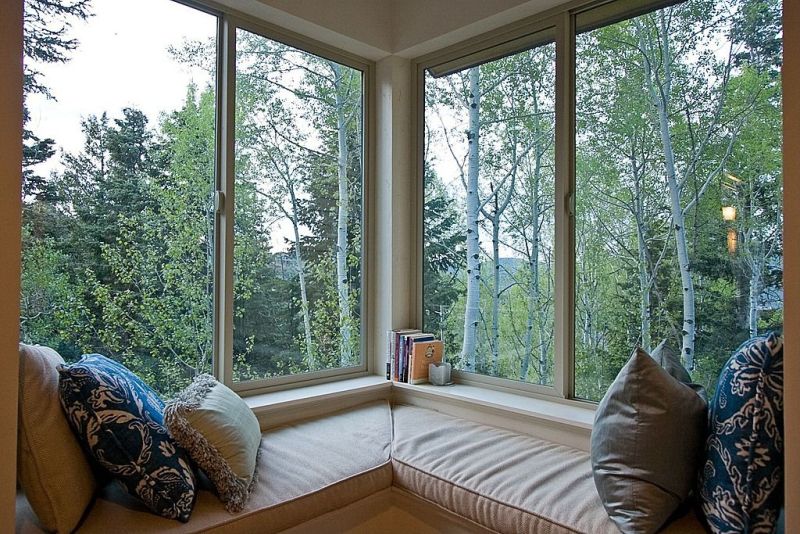
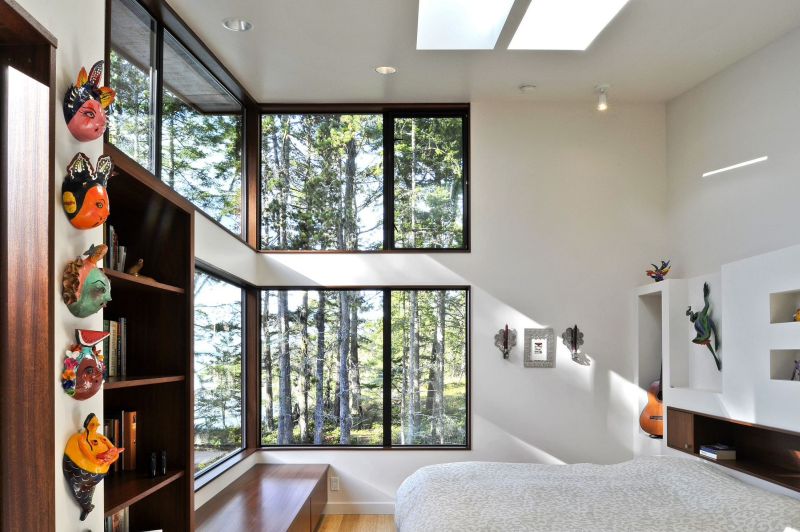
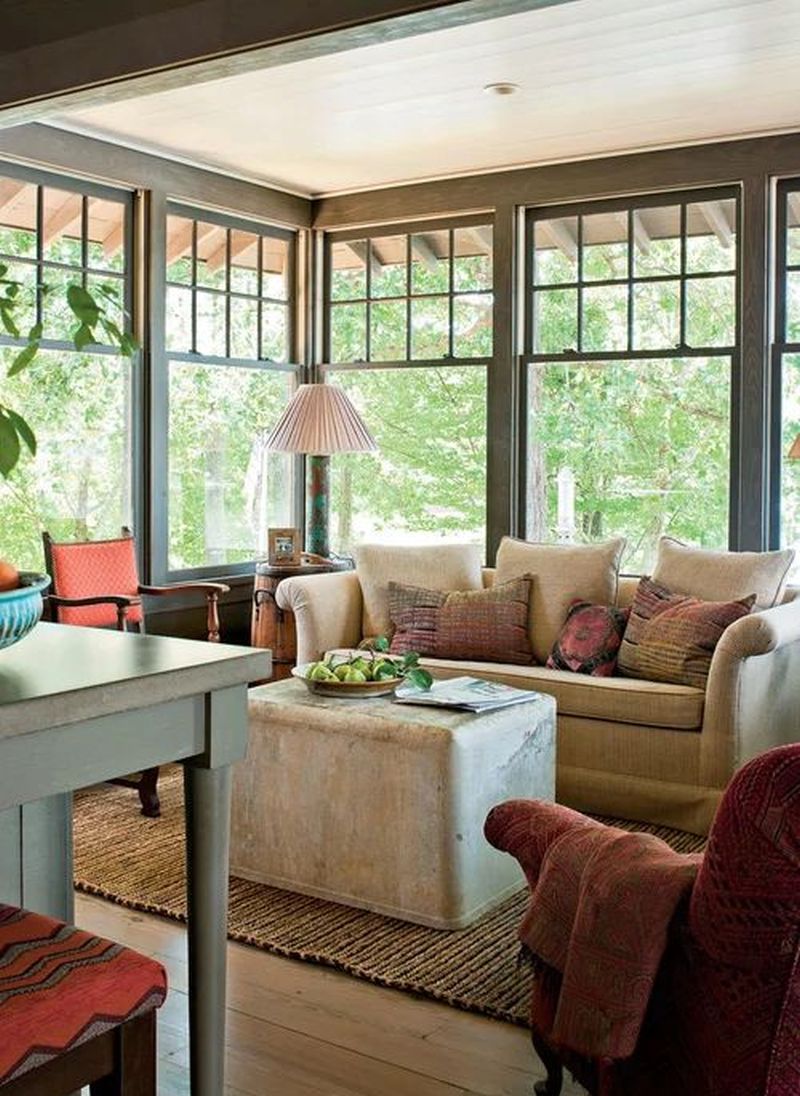
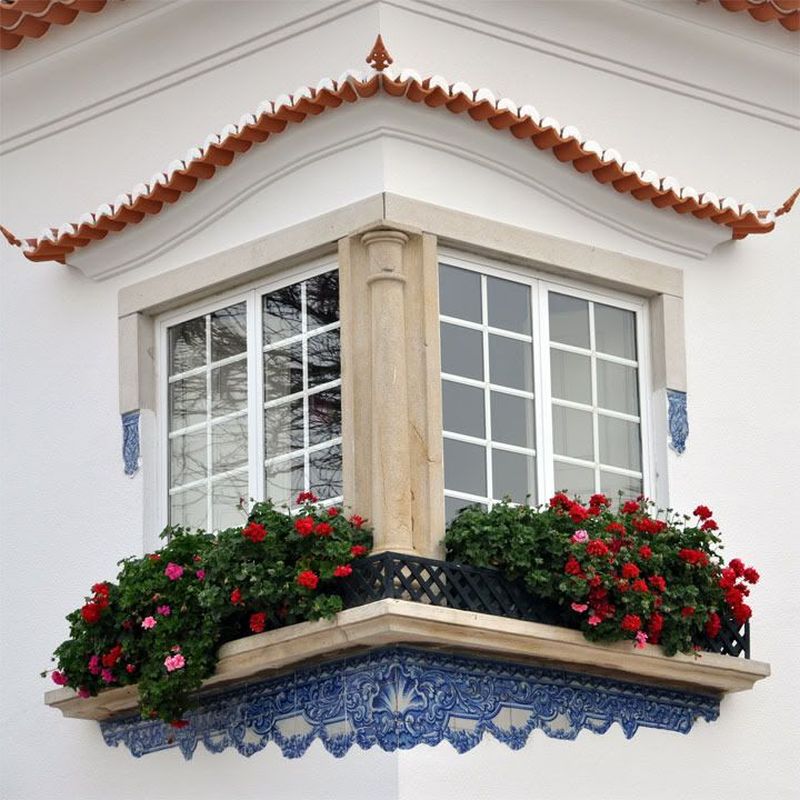
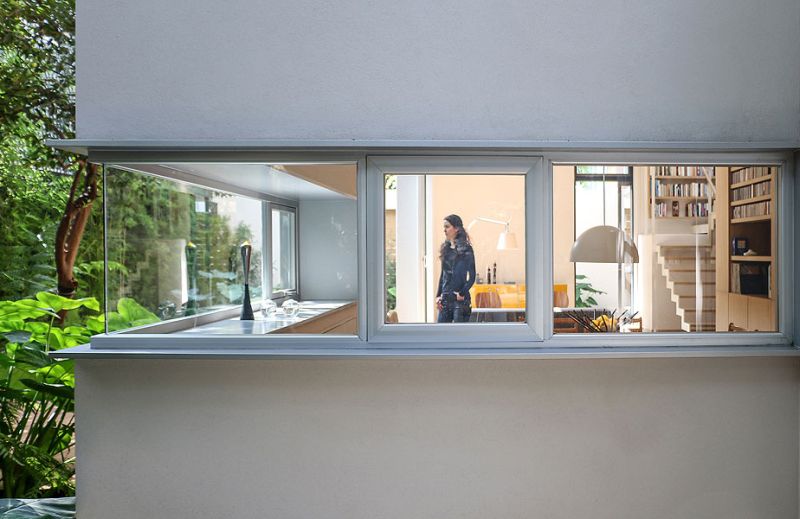
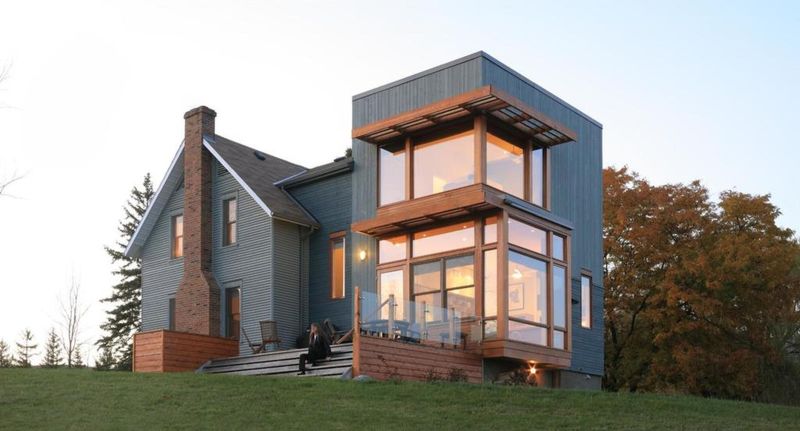
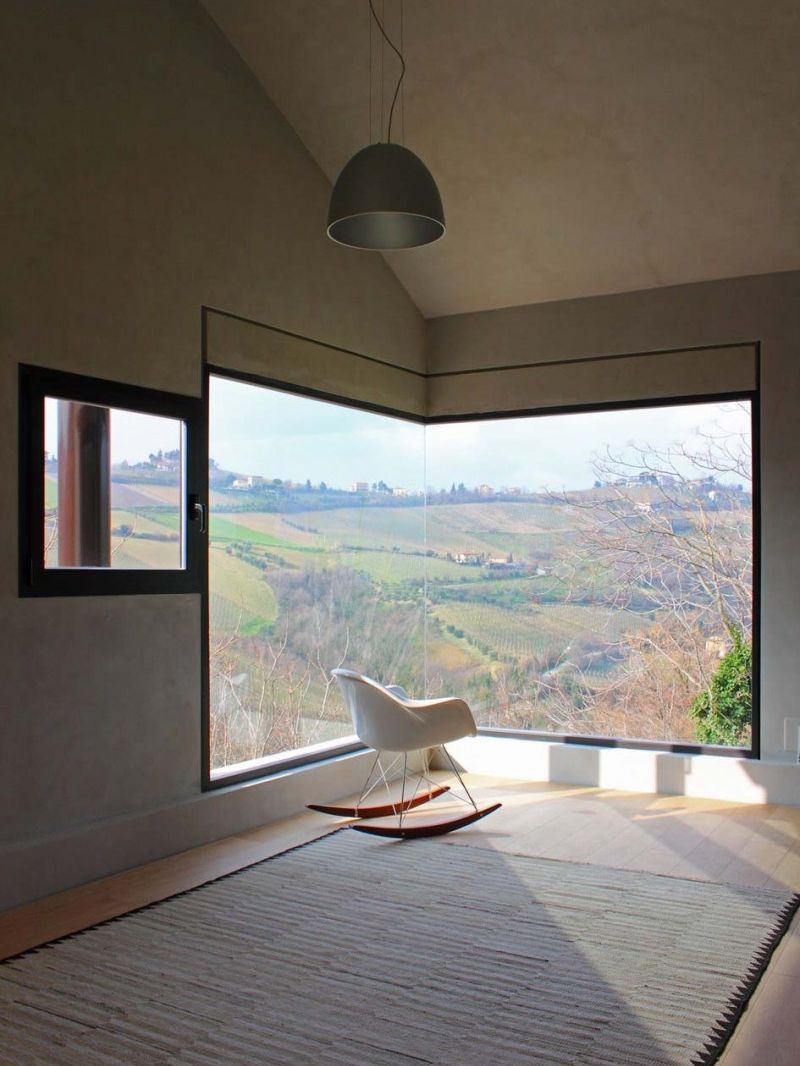
11. Skylight Windows

If you’re looking for a modernist way to brighten up your home, the skylight window can do it for you. They are perfect for small bedrooms and kitchen since they create an illusion of a larger space. The air and light flow are impeccable, and you can open the windows outward with ease. Not only does the skylight look like an invention of the modern era, but ease of use and space-friendly placement keep them at the top of the homeowner’s list.
Pros:
- Increases natural light indoors
- Makes small spaces feel larger
- Value addition to a property
Cons:
- Potential energy and moisture leaks
- Expensive to install and maintain
- Sun glare through the skylight can fade carpets and fabric quicker
Skylight Window Design Ideas
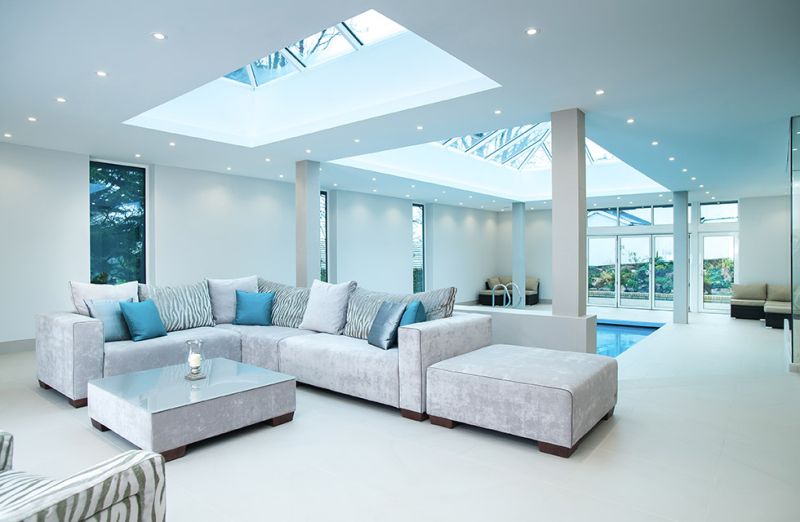
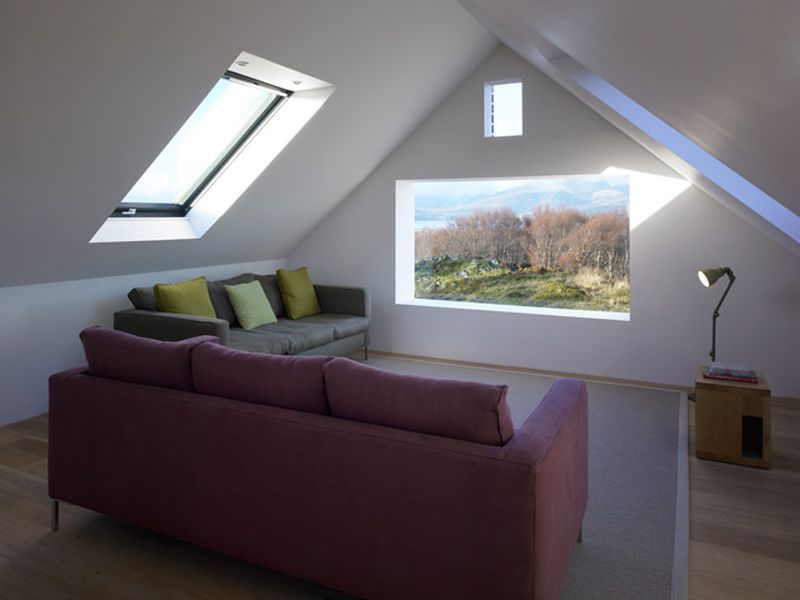
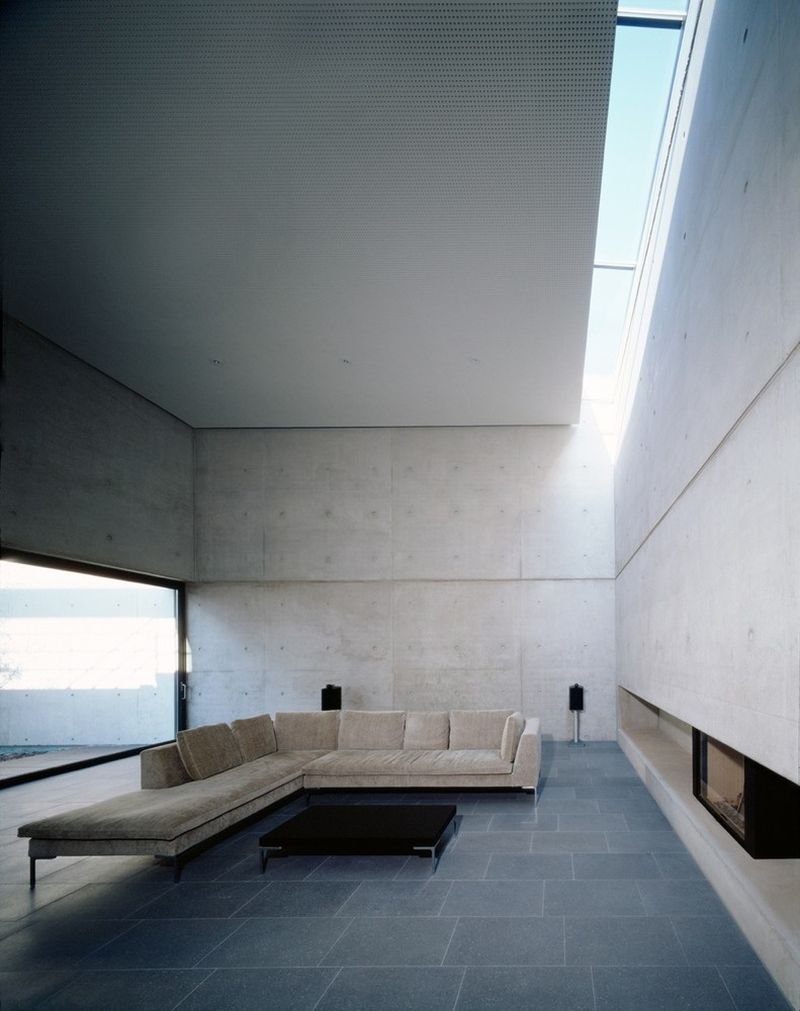
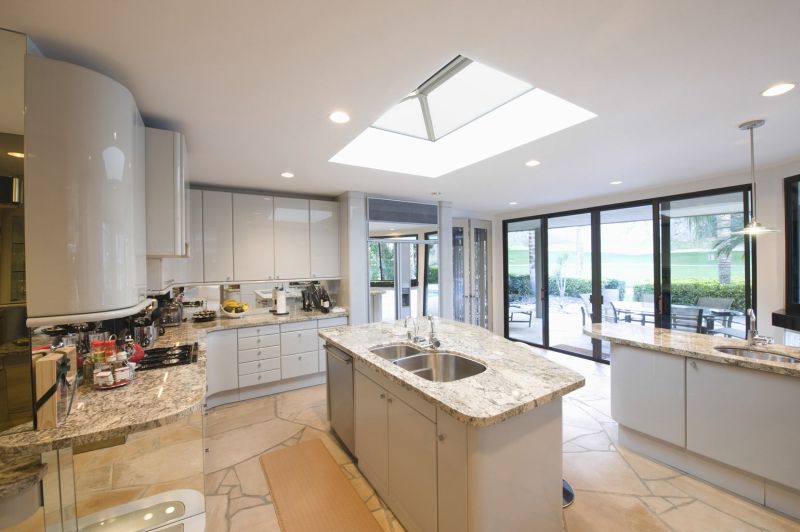
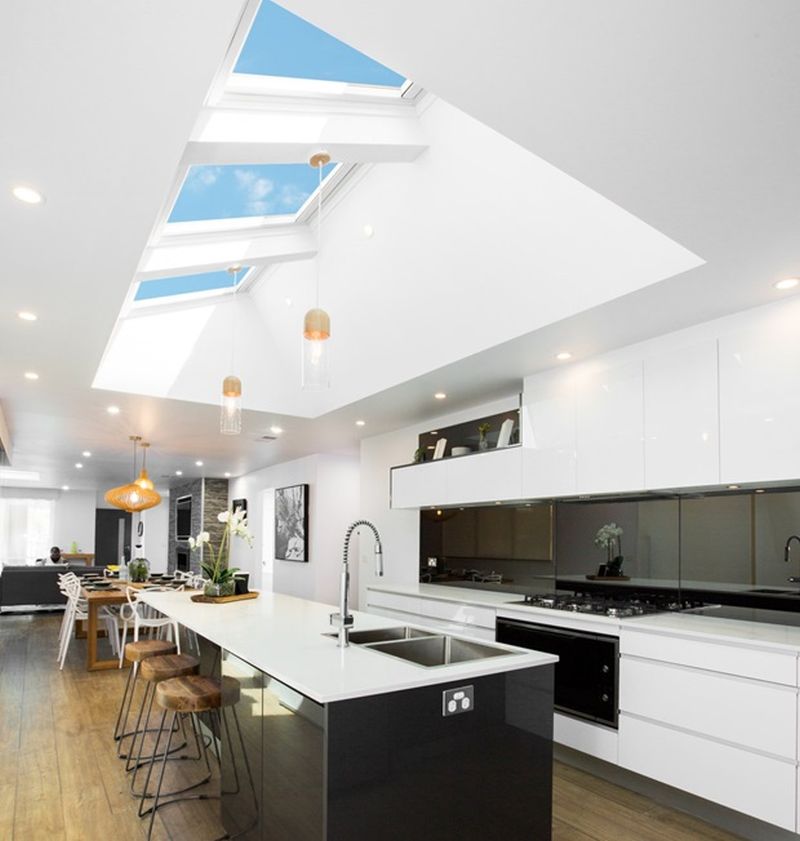
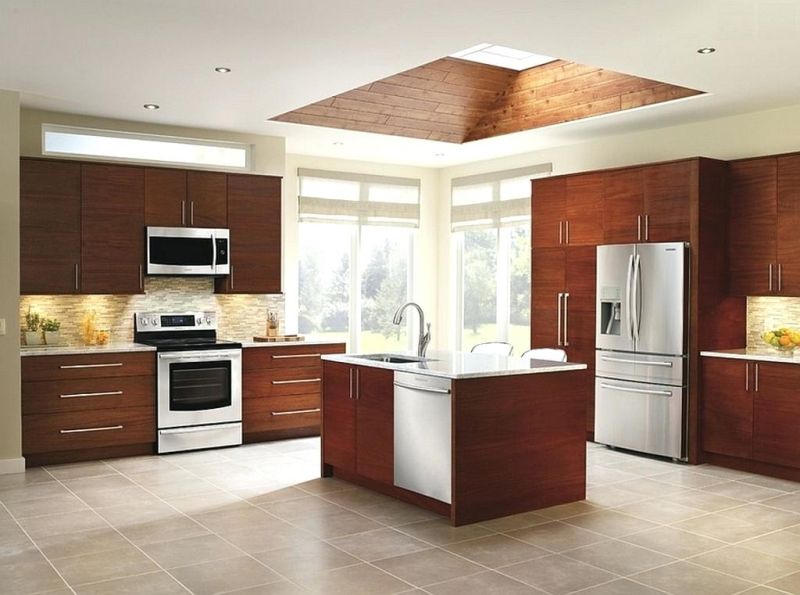
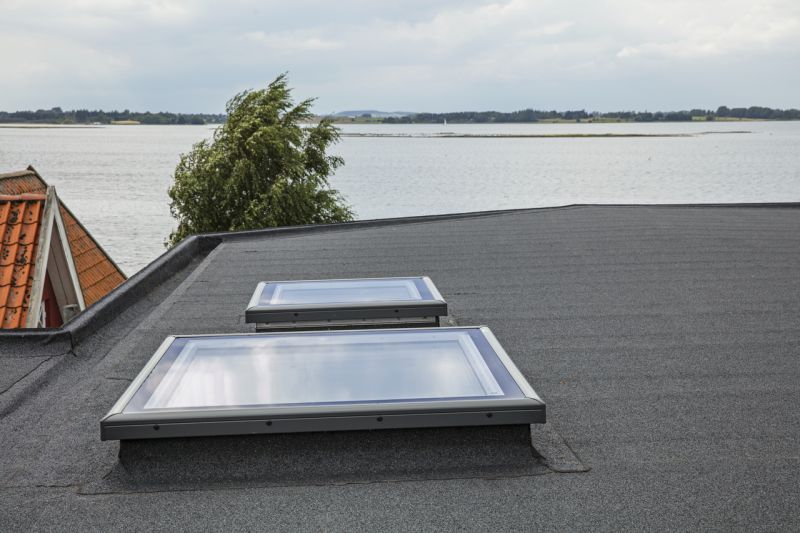
Types of Window Frames
Window frames are the structures that supports the window pane and provide structural integrity. Adding character and aesthetic appeal to your home, window frames play an important role in ensuring the longevity, insulation, and protection of these architectural features from the outdoor elements. Before you go in search of right window frames for your home, you should be aware of different types and materials available for window frames.
The types of window frames include aluminum, vinyl, wood, fiberglass, composite, and steel. Each of these window frames have their own qualities, efficiencies, and drawbacks all of which you ought to consider to make an informed decision.
Aluminum
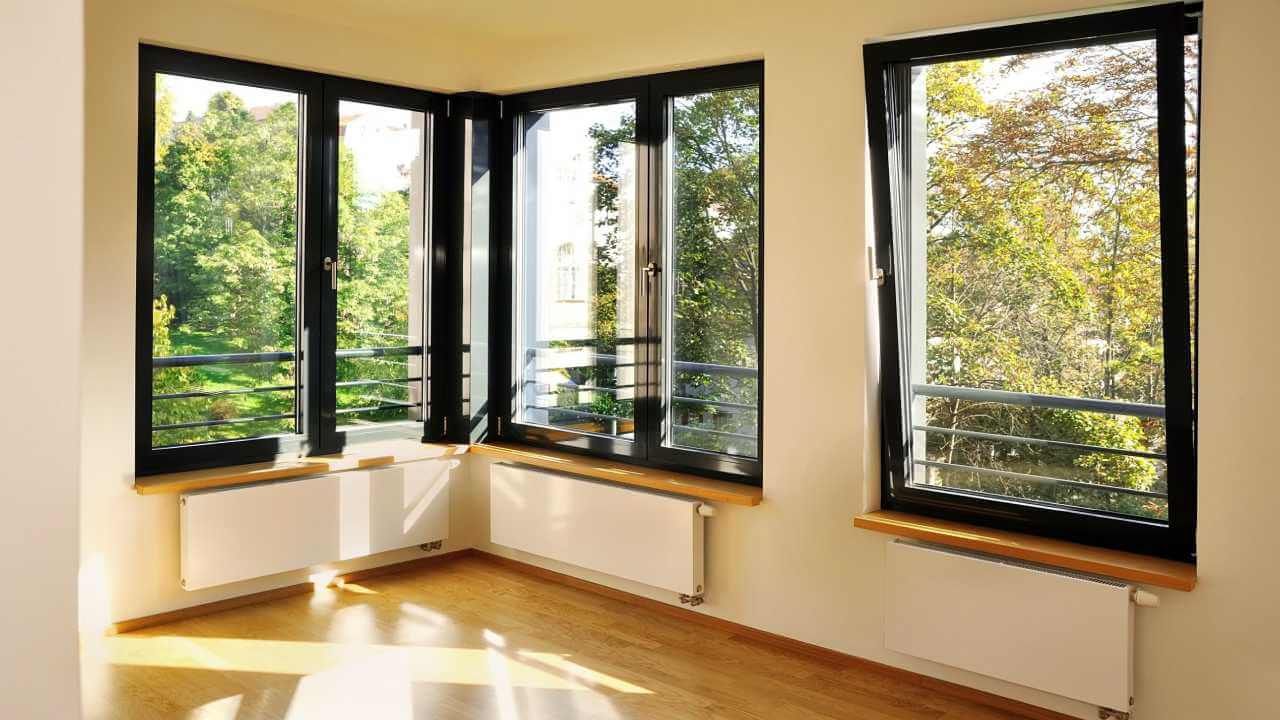
Aluminum window frames are mostly chosen for their wind resistant qualities. They are suitable for larger windows, as they are durable and offer a sleek look. They can last for several years with proper maintenance. These window frames are not very energy-efficient as they conduct immense heat. They are low maintenance and recyclable, making them a good choice.
Fiberglass
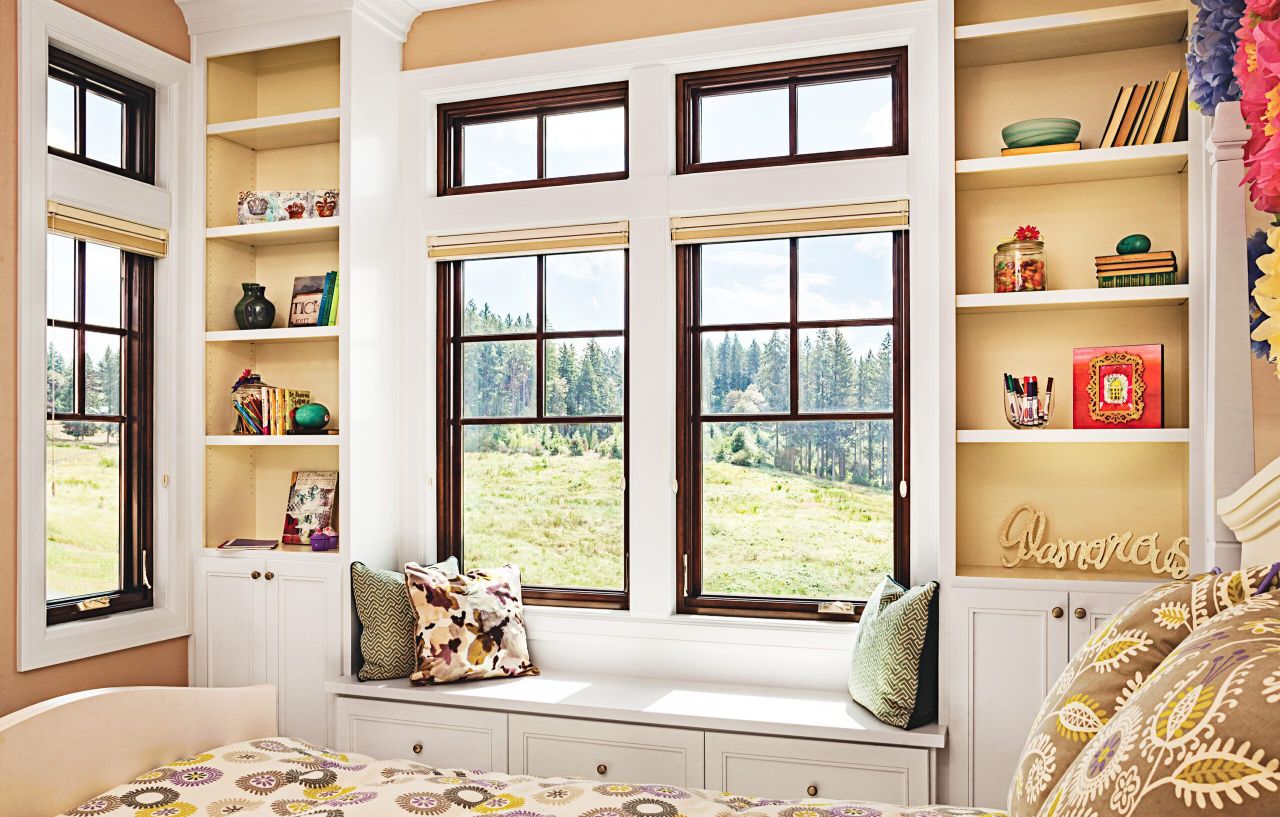
The fiberglass window frames are built from a mix of glass fiber and resin. Despite their slim appearance, they are strong and more energy-efficient than aluminum window frames. By using fiberglass window frames, you can protect the windows from any moisture, making them ideal for homes in humid regions. The only drawback is that they are difficult to install and allow fewer customization options.
Wood
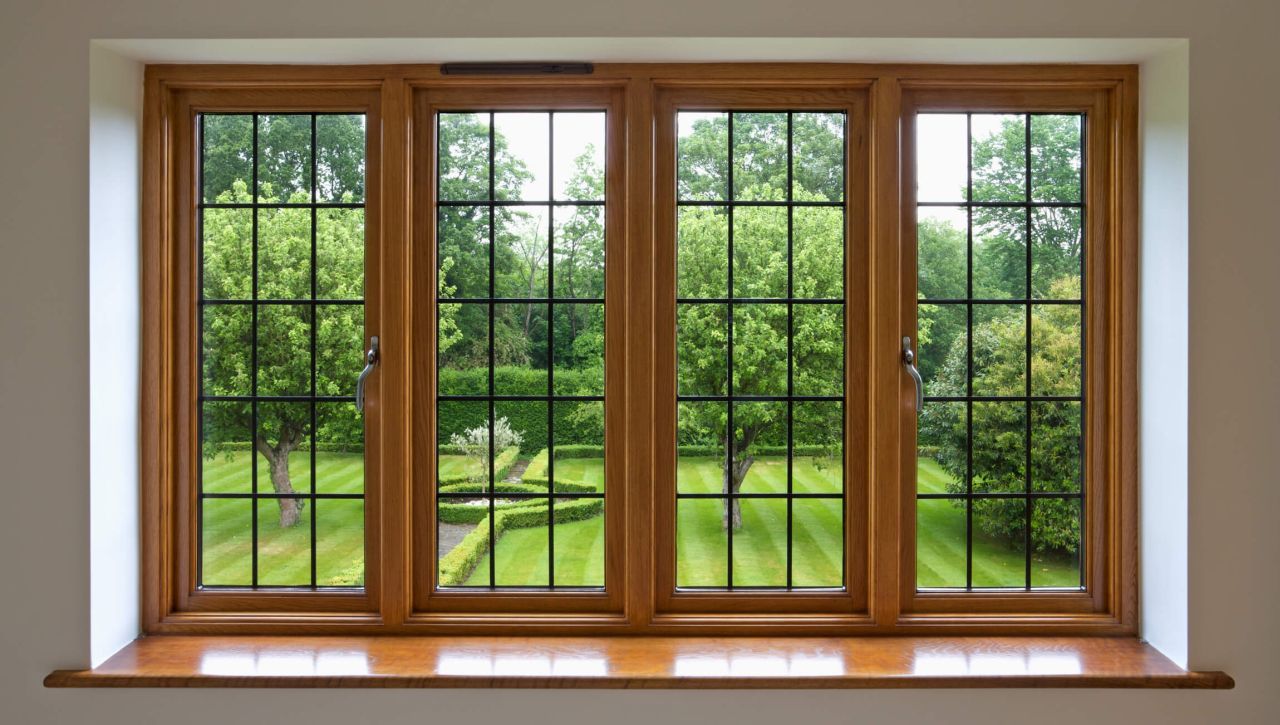
The wood window frames are aesthetically pleasing and lend the structure a warm appearance. They are majorly used for their durability, recyclability, and energy-efficiency. The only downside of the wood frames is their high maintenance. Due to the material’s susceptibility to warping, rotting, and insect damage without proper treatment, the wood frames need constant care and maintenance.
Composite
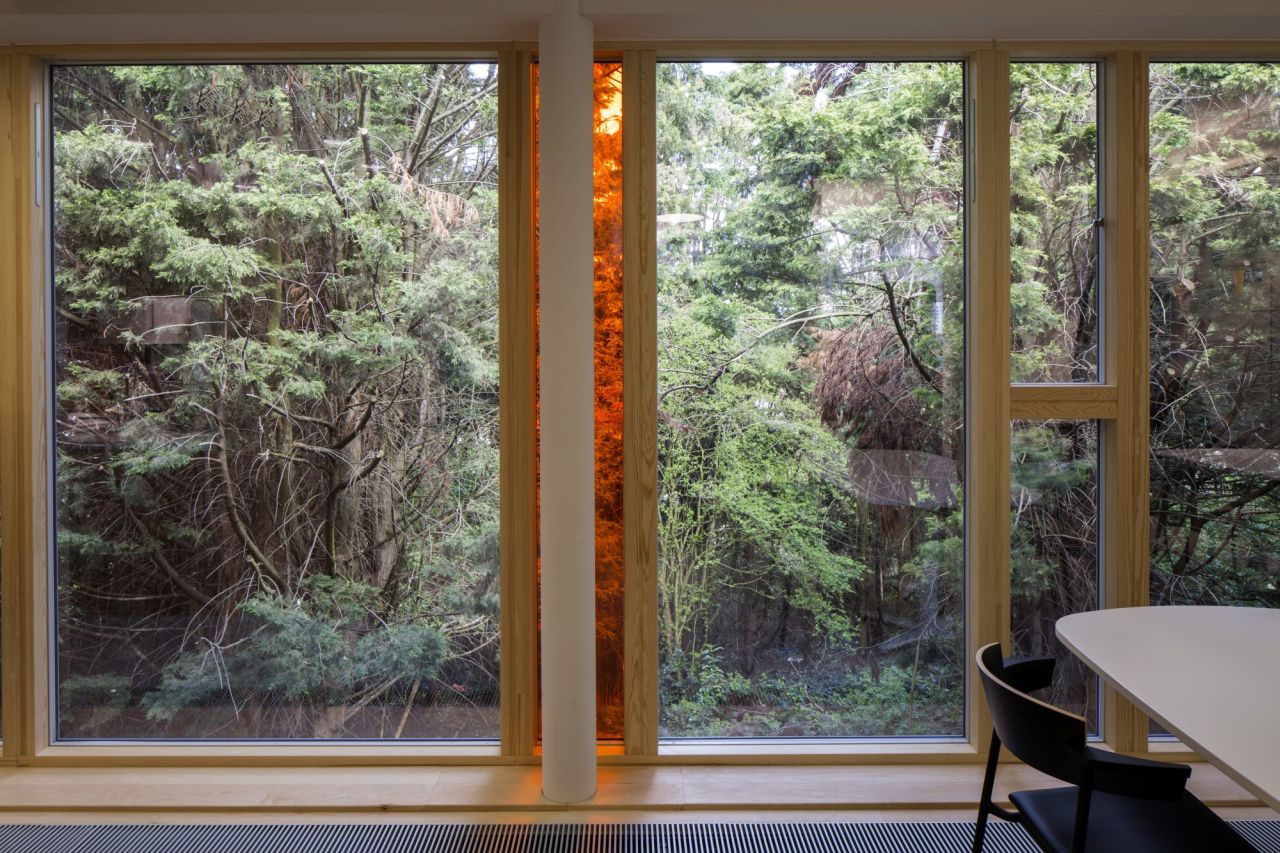
Composite window frames are made from a mixture of wood fibers and plastic polymers. The appearance of this material resonate with wood, but it has higher durability and low maintenance needs. These window frames are eco-friendly, rot-resistant, and a great insulator, lowering your energy bills. The only disadvantage may be their expensiveness.
Steel
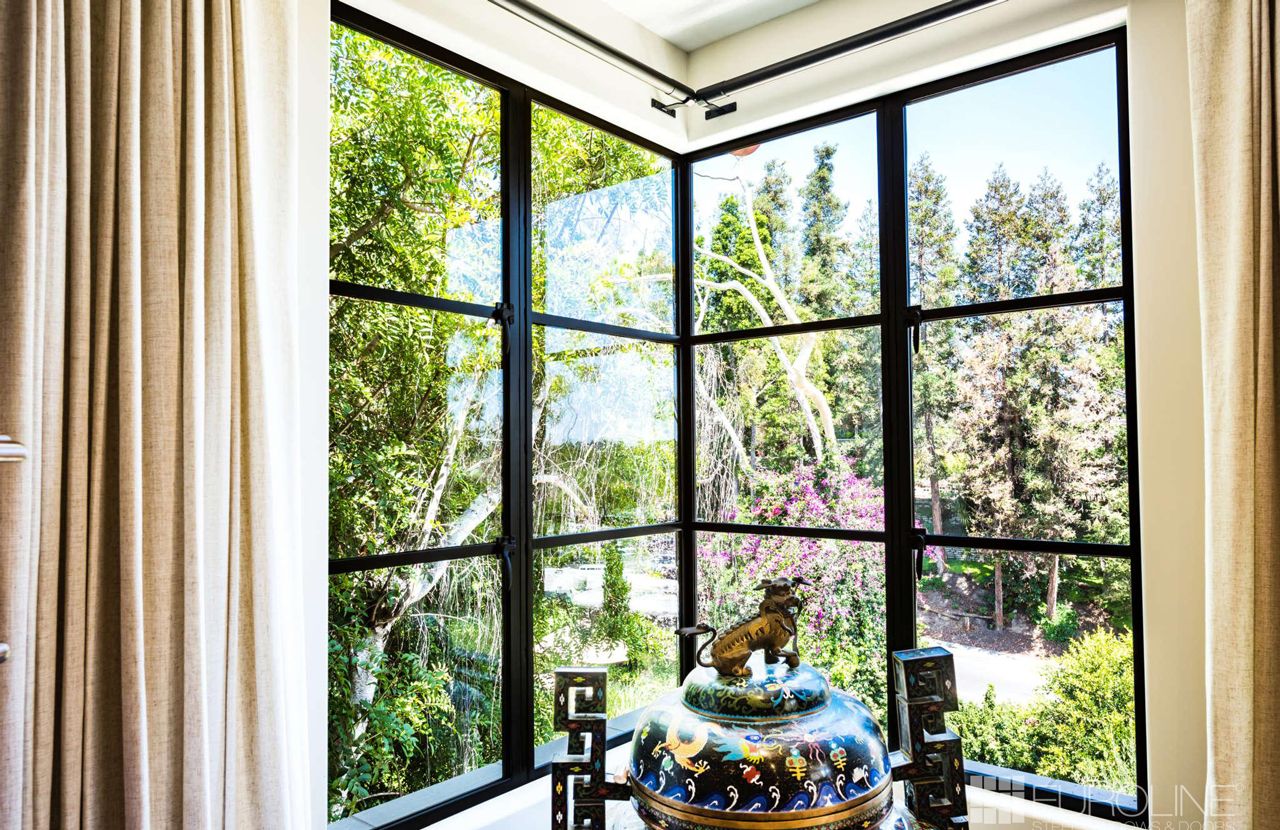
Steel window frames are a contemporary choice for modern homes. They are pricey, heavy, and difficult to customize or cut. Despite the disadvantages, many people love them for their premium quality, longevity, extreme durability, and fire-resistant qualities.
Vinyl
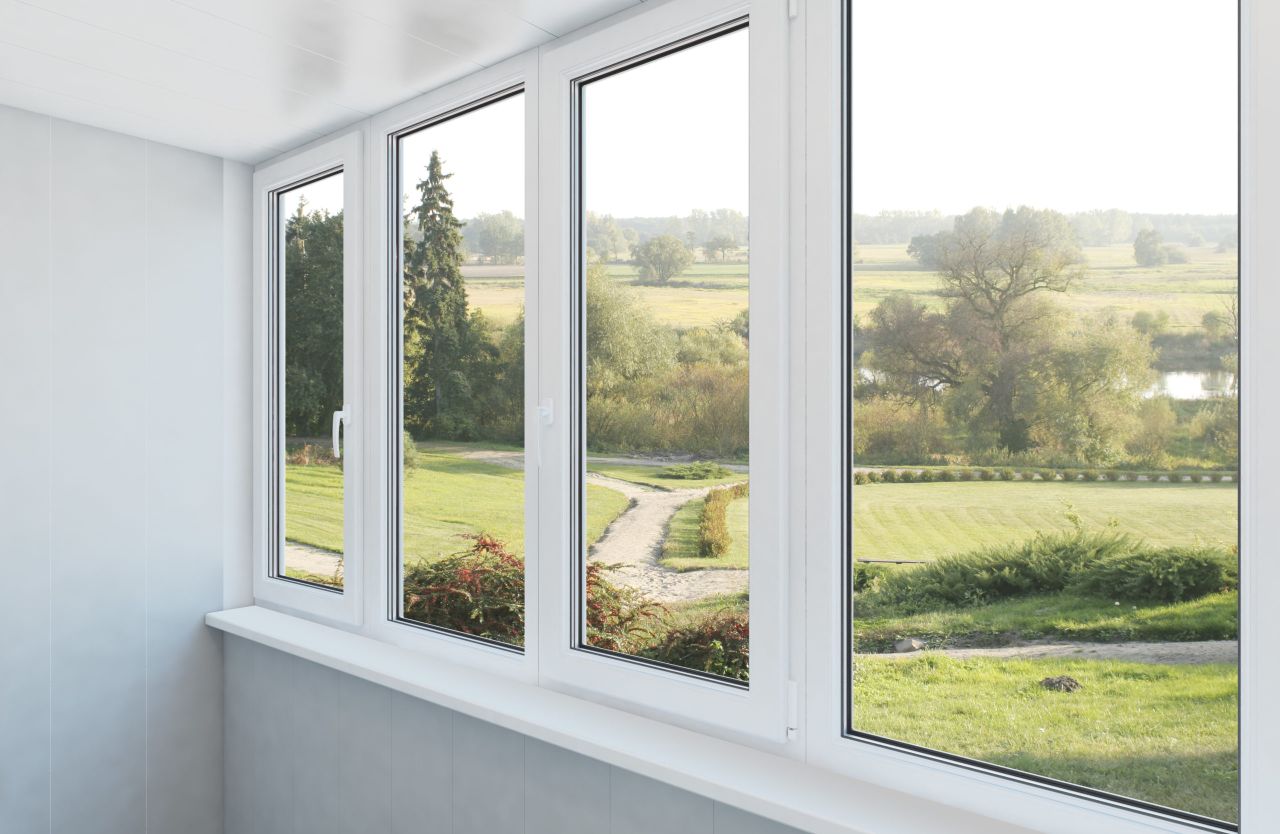
Vinyl window frames are the most budget-friendly models. They are also a popular choice because of their energy-efficient, fire-resistant, and low maintenance qualities. Vinyl window frames are recyclable as well. However, if exposed to high temperatures, vinyl can warp.
Which Type of Window is Best for My Home?
Casement windows are considered to be the most preferred type of windows for homes. These are also a popular choice because they provide unobstructed views and a classic flair to modern houses. They have hinges which connect them to the frame and make them open outwards, offering ventilation.
Unlike double-hung or sliding windows, casement windows open completely, allowing more fresh air and natural light to enter the house. They are also a better option due to their design and sealing capabilities. The windows are operated via a crank, making them effortless to open and close.
Out of all the window styles out there, this style of window suits any modern or traditional home aesthetic. They are an expensive option comparing to other window styles, but their long-term energy saving, versatile design, and ease of use justify the pricing.
Which Window Style is the Cheapest?
Choosing affordable windows are a great way to enhance the look of your home without spending too much. Opting for cheaper window styles may come with fewer customization options and lesser durability, they still have benefits such as energy savings, noise reduction, low maintenance and more.
If you are looking for a window style that is cheap, then single-hung windows are your safest bet as they often sit on the affordable side. Their simple and uncomplicated mechanism leads to a lower price point. Their top sash is fixed and bottom sash opens outward. You can also consider single-hung windows for their ease of installation. These are also more budget-friendly than casement or awning windows.
Single-hung windows are low maintenance unlike double-hung windows due to fewer components. They are also more energy-efficient if installed with premium weather-stripping and insulated glass. Another advantage of single-hung windows is their space-saving design. They take up less space and add enough sunlight and breeze to a room.
Modern Window Colors
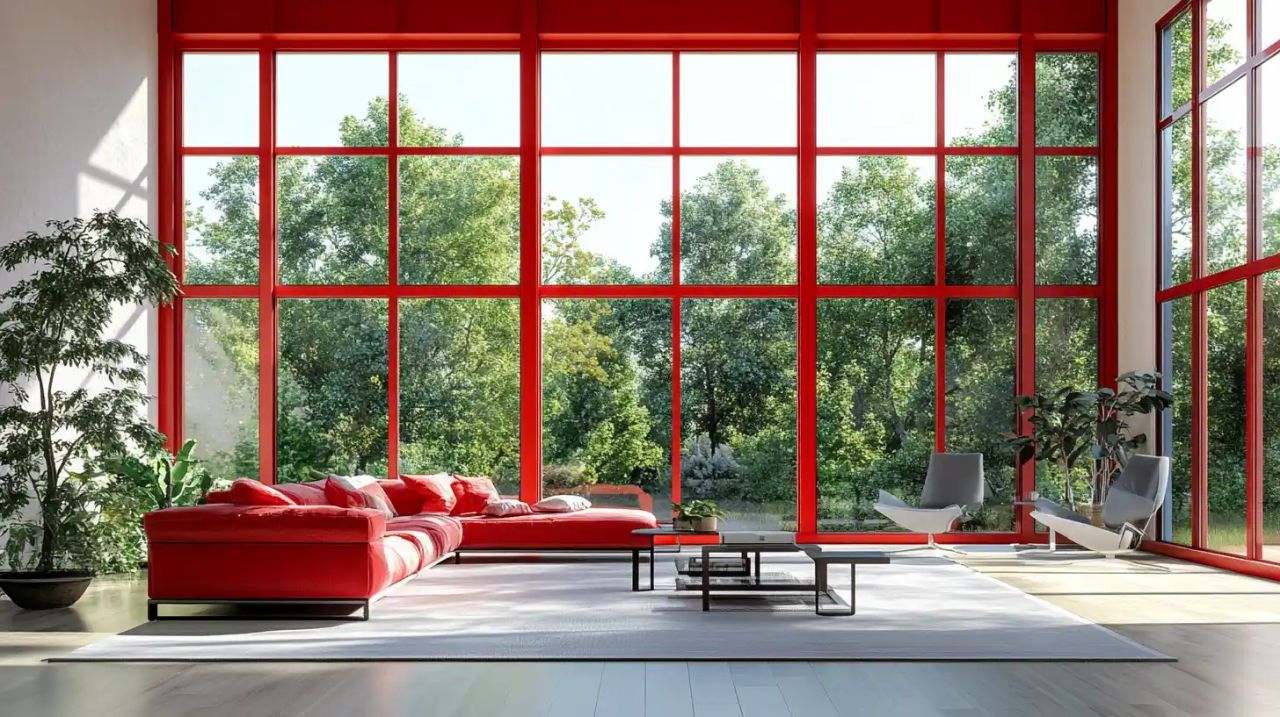
Colors make everything captivating and there are several ways you can bring a pop of color to your home and make it stand out. There is another way to bring bright colors to plain exterior – by painting windows in exciting shades. If you don’t know what colors to pick, then here are some of the most loved color options that most homeowners go for.
The most trendy and appealing window colors for modern homes are earth tones such as soft greens, warm sands, and muted clay colors. Bold black for modern elegance and blues for soothing appearance. Neutral greys and vibrant accents like coral, yellow, or teal are efficient in elevating your homes’ appearance.
Most Frequently Asked Questions About Window Designs
Question. Can I replace a bow window with a bay window?
Answer. Yes, you can replace a bow window with a bay window. However, you need to consider any structural differences for the two, as the replacement may require adjustments to the framing or exterior siding. If you are still considering, than bay window is a good and ideal option for rooms with limited space. However, taking an advice from a professional before switching the windows is always recommended.
Question. What are the benefits of a bay window?
Answer. Bay windows have many advantages such as increased natural light and unobstructed views that make your space feel expansive and welcoming. The windows also create additional space to sit and read or to display the antiques for a luxurious vibe. These window styles fit better in small rooms such as dining rooms or breakfast nooks. Bay windows also make the interior and exterior look more interesting.
Question. What maintenance do windows needs?
A. If you want to increase the longevity of your window, cleaning the operating hardware on your windows such as hinges and tracks with a soft cloth and cleaner is advisable. You can lubricate the operating hardware with oil for a smooth operation and longevity. Regular upgrades of window glass, sashes, frames, and caulking will help your windows last long.
Q. What type of windows last the longest?
A. Fiberglass windows are the most durable and last longer than other alternatives. Why? Because it is highly resistant to corrosion, warping, rotting and rusting. They are also resistant to harsh weather and insect damage. Fiberglass is low maintenance and pretty decorative than its vinyl counterpart, as it’s easier to paint.
Q. Which type of window is the best for traditional home?
A. Double-hung has two sashes fitted inside a single frame. These two sashes can be opened independently to create airflow. This window style is the most preferred choice for traditional homes. Double-hung windows are also effortless to clean, just tilt the sashes inward, allowing you to clean the outside of the window from the inside of your home. Arched, bay or bow windows are also a popular option for traditional homes as they lend the structure a vintage look
Q. How to check the durability of any window?
A. Most of the window testing involves air and water tightness where strong jets of water and wind are used to test the outside of the windows. This process basically determines whether any air or water enter inside. Then you also need to assess the structures for damage and wear tear.
Follow Homecrux on Google News!

